Kristeen Hernandez aka Lady2Soothe Follow @OurVoicesEcho
Racism and religion have killed more people than any disease in history and bigots have no shortage of language to express their small-mindedness; it’s a well-honed vernacular in a country still struggling with race even decades after constitutionally protected equality was established… When you’re accustomed to privilege, equality feels like oppression, and as Toni Morrison said “In this country American means White. Everybody else has to hyphenate.”
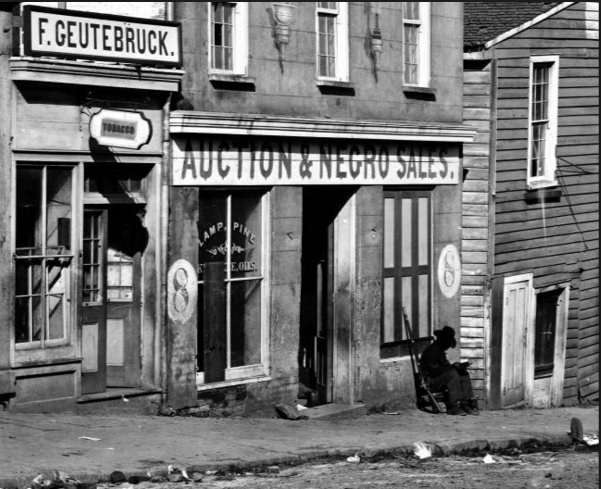

Slaves chained together so they don’t escape from their Master.
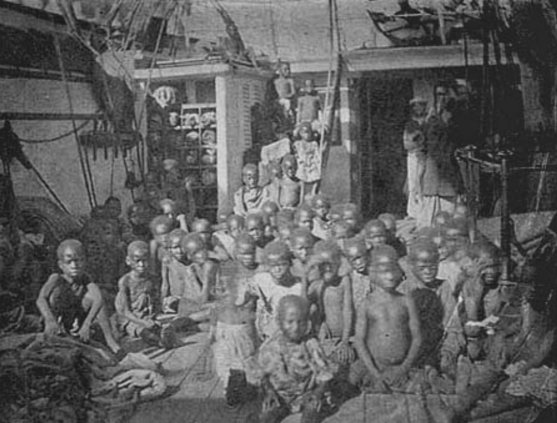
Aetna Ins. Co. of Hartford CT. newspaper ad informing the public they’ve moved to a new location but are still offering “Negro Slaves for Sale”
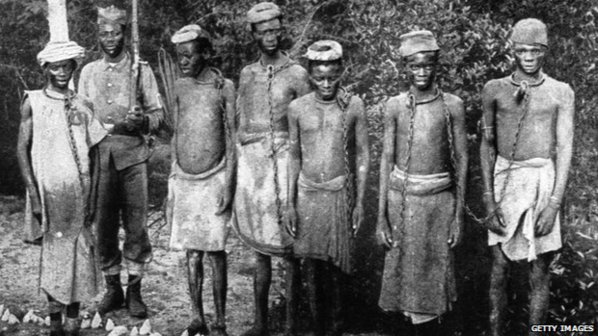

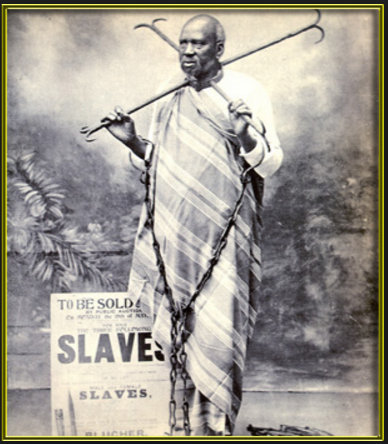
Additional Photos below
RACE describes categories assigned to demographic groups based on observable PHYSICAL CHARACTERISTICS such as SKIN COLOR, HAIR TEXTURE, LIP, NOSE and EYE SHAPE. A group of people sharing similar and distinct physical characteristics, differences and similarities in biological traits deemed by society to be socially significant
ETHNICITY refers to the SOCIAL CHARATERISTICS people may have in common, such as language, religion, regional background, culture, foods, etc. Ethnicity is revealed by the traditions one follows, a person’s native language, and so on.
NATIONALITY is the legal relationship between a person and a country.
RACISM is systematic discrimination because of race. It is the belief all members of each race possess characteristics or abilities specific to that race, especially so as to distinguish it as inferior or superior to another race or races. Prejudice, discrimination, or antagonism directed against someone of a different race based on the belief that one’s own race is superior. Racism was established long before nationality and religious bigotry existed.
In ancient Egypt there were no vowels; Negro was represented as N-G-R and pronounced en-jer, which is auditory for GOD. Therefore N-G-R: NEGRO translates to Devine Being or God. Moving forward to 735 BC Rome where the language of Latin came into use; Nigrum or Negro (pronounced neg-ro) meaning the color black originated as a neutral term referring to people with black skin.
(1280-1337) African ruler Mansa Musa was the fourteenth-century emperor of the Mali Empire. Mansa Musa established religious freedom. Education was free and encouraged. He even established a university. People came from all over the world to study at this famous university. When Muslim scholars visited Mali, they were surprised at the people’s clothes. About 90,000 men on duty at any one time to guard the gold mines and Traders always stopped at Mali as they knew they would be welcomed, fed, housed, and safe because of Mansa Musa’s generosity. Trade with Mali was always good for the traders who had come so far. Mansa Musa traveled with 100 camels, each carrying 300 lbs of gold. After adjusting for inflation, he was worth $400 billion in today’s currency which is more than Bill Gates and Warren Buffet combined, with $200 billion left over for good measure.
Skipping forward many centuries to the 1500’s and progressing through the mid-1800’s, the Atlantic Slave Trade transported over 10 million African’s; nearly 15% of slaves were captured in the River Niger Delta Region in West Africa and delivered to the coast to be sold at European trading ports. It is believed these slaves were called Niger’s (pronounced Ni-gir) to differentiate them from other regions such as the Congo, Angola or Cameroon.
Word alterations in the US and the negative connotations they elicit as a description of a “negro or “N,” with no value attached to the word itself. During the period of subjugation the words “N” or “Black” was situated in front of a first name to distinguish a slave from a White person with the same first name establishing the pigment demarcation line, thus becoming an intentional derogatory term to belittle and degrade.
The racial formation and derogatory use of the “N” word is not much different than plantation owners feeding slaves as cheaply as possible with poor quality leftover waste foods and scraps as a means of a complex social, economic and political system to control and punish. African slaves were extremely creative with their provisions which evolved into the distinct cuisine, Soul Food; the correlation and racial project being, by using the “N” word by Blacks in today’s culture; it is now elevated to a level of sophistication, thereby negating the disparaging intent.
Nigga vs Nigger is a representation of homophones with the “N” word defining peoples’ who are economically, politically, socially enslaved and dominated under the rule of oppression by the use of racial formation, or as Voltaire claimed “The negro race is a species of men different from ours as the breed of spaniels is from that of greyhounds”. While the word “nigga” is a phrase used in the Black community to define brotherhood, friendship, affections and at times even animosity, it’s the latter of the two which many Black’s chose to use as a term of endearment.
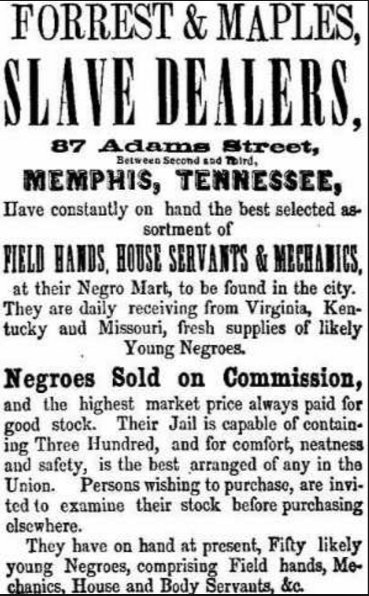
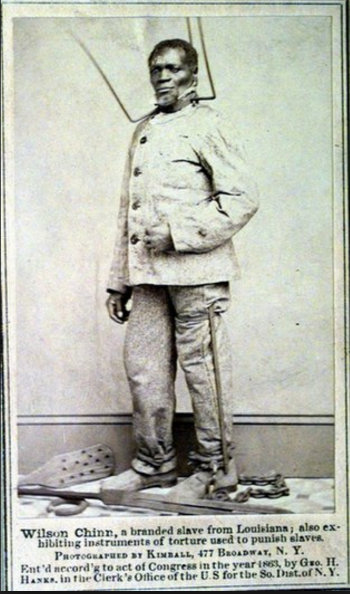


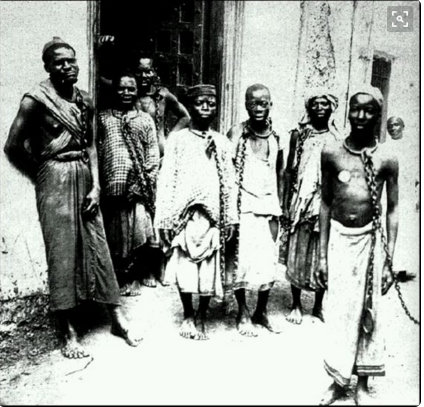

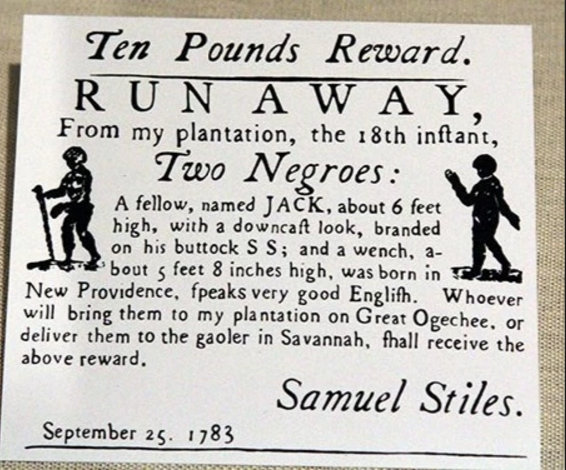
FUGITIVE SLAVE ACT
Fugitive slave laws were laws passed by the United States Congress in 1793 and 1850 to provide for the return of slaves who escaped from one state into another state or territory. The idea of the fugitive slave law was derived from the Fugitive Slave Clause which is in the United States Constitution (Article IV, Section 2, Paragraph 3). It was thought forcing states to deliver escaped slaves to slave owners violated states’ rights due to state sovereignty and was believed that seizing state property should not be left up to the states. The Fugitive Slave Clause states escaped slaves “shall be delivered up on Claim of the Party to whom such Service or Labor may be due”, which abridged state rights because retrieving slaves was a form of retrieving private property. After the compromise of 1850, the Supreme Court made slavery a protected institution and arranged a series of laws allowing slavery in the new territories and forced officials in Free States to give a hearing to slaveholders without a jury. Northerners felt like this was a kidnapping process.
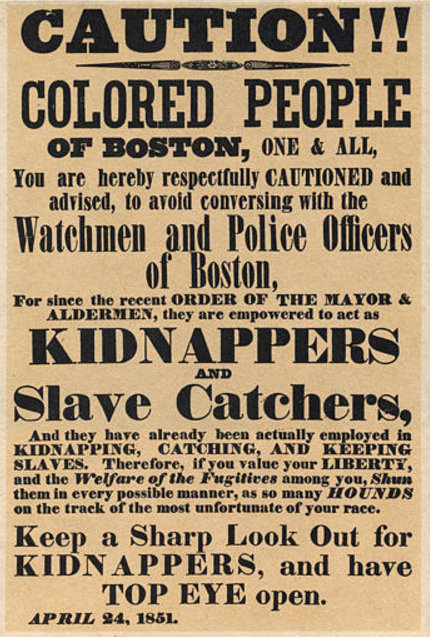
Massachusetts had abolished slavery in 1783, but the Fugitive Slave Law of 1850 required government officials to assist slavecatchers in capturing fugitives within the state.
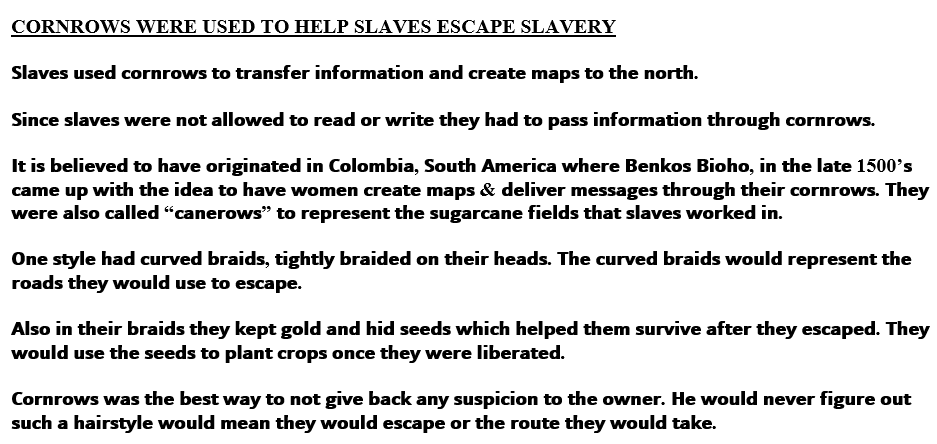
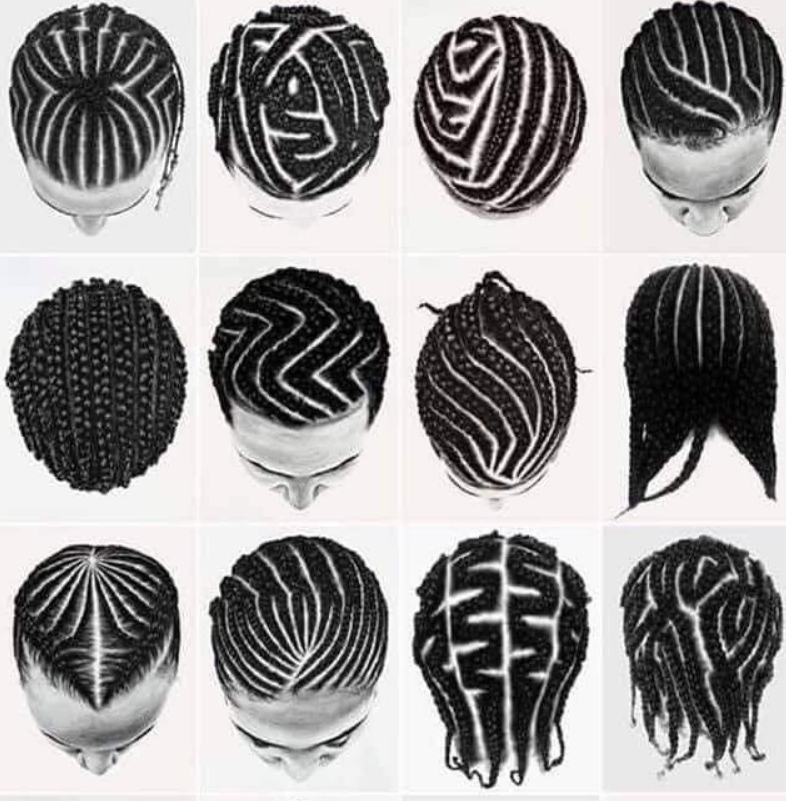
THE CRUELTY OF SLAVERY
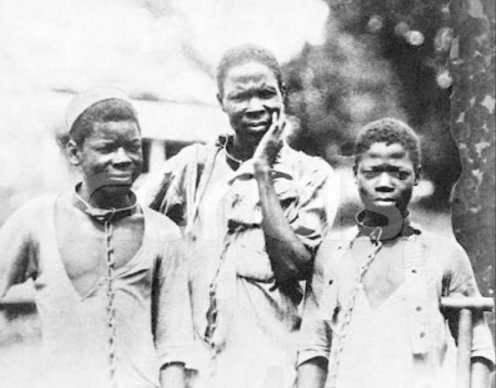
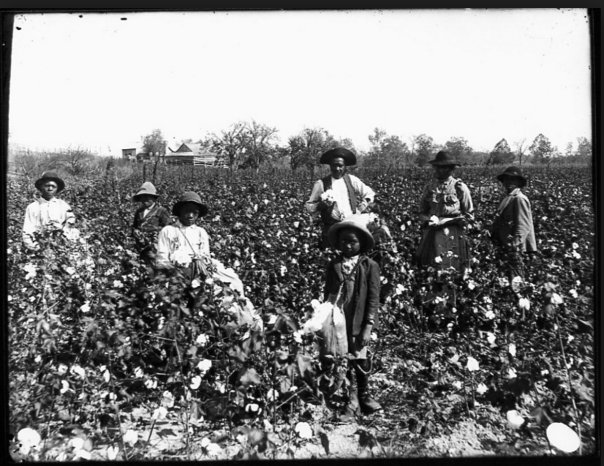
The enslavement of African’s in the America’s by the nations and people’s of Western Europe created the economic engine which funded American Capitalism
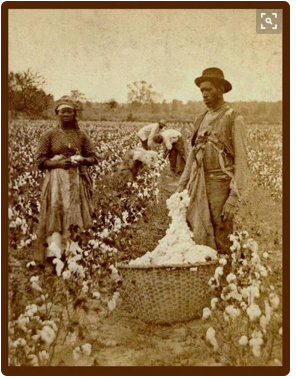


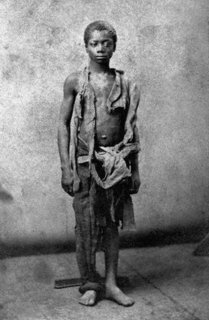
1860
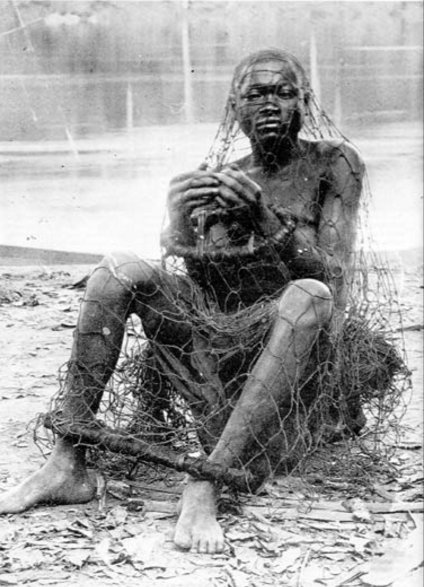
Slaves were punished for a variety of reasons, most of the time it was for working too slow or running away
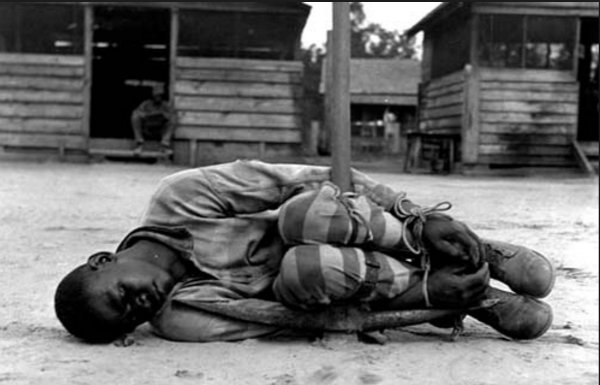
The White Christian and moral influences have not only done little to prevent the Negro from becoming a criminal they deliberately shut him out of society.
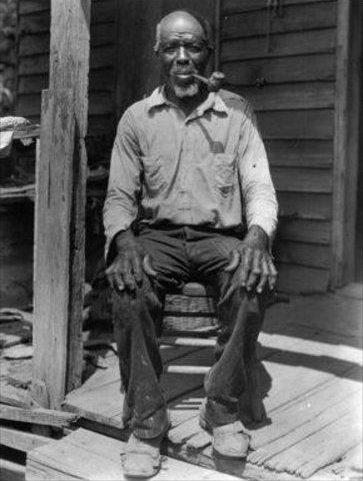
Cudjo Lewis (1841 – 1935) is considered the last survivor of the last slave ship to enter the United States. He was born around 1841 to a Yoruba family in the Bantè region of Dahomey (today Benin).
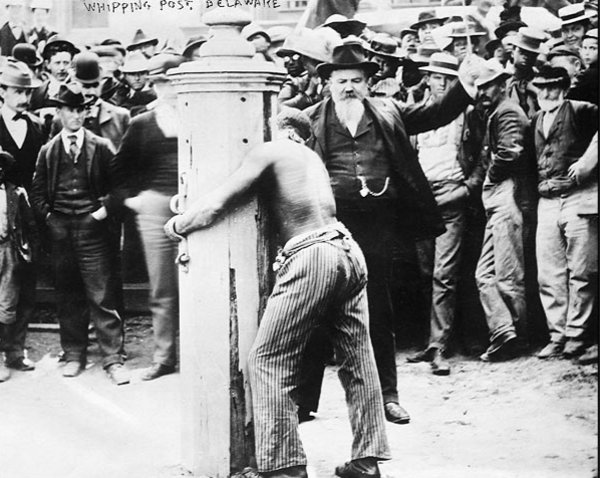
According to news sources “HE” made that nigger wear a bell for a year and took it off on Christmas as a present “It sho did make a good Nigger outta him”
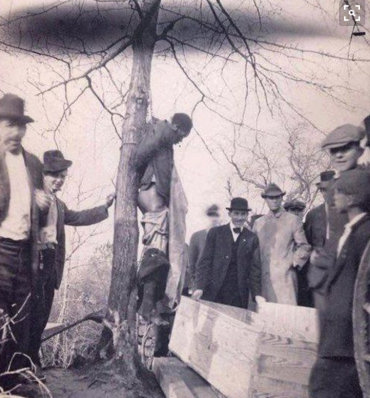
Goldsboro NC … His pants have been pulled down and he was castrated.
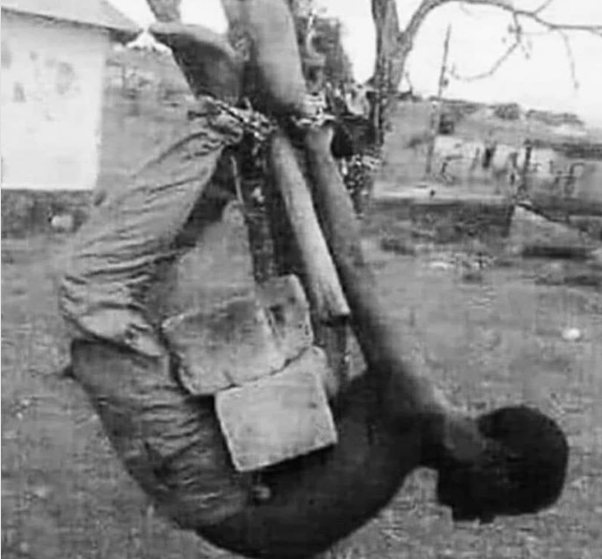
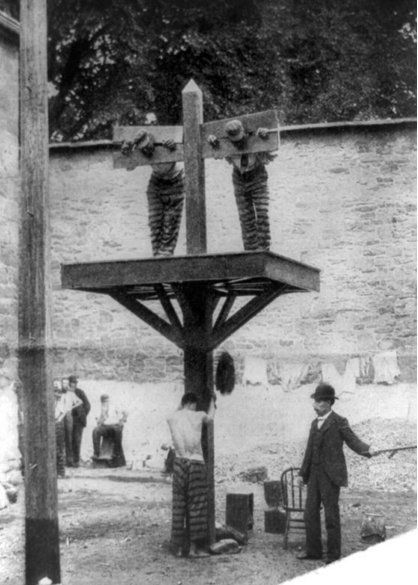
Delaware 1907: Two prisoners in pillory and another tied to a whipping post below.
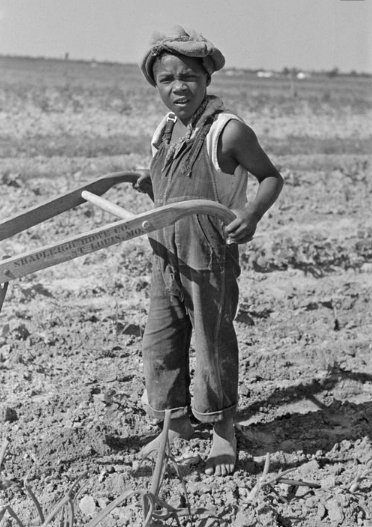
Young children were not immune from field work 6 days a week from dawn to dusk
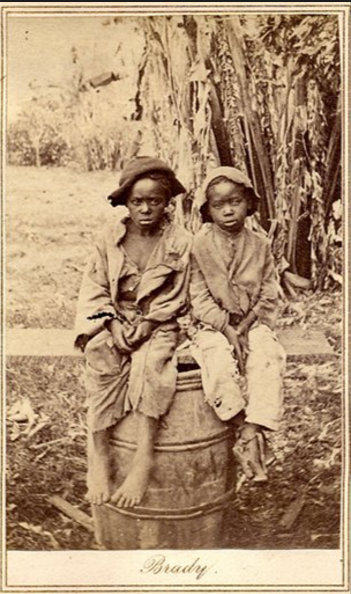
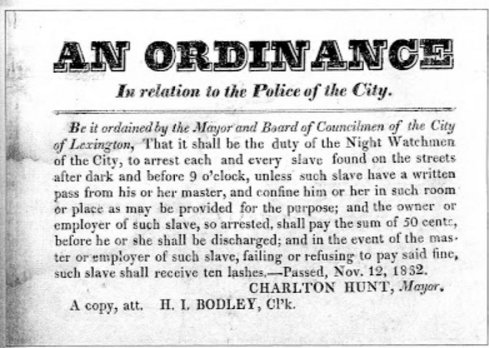
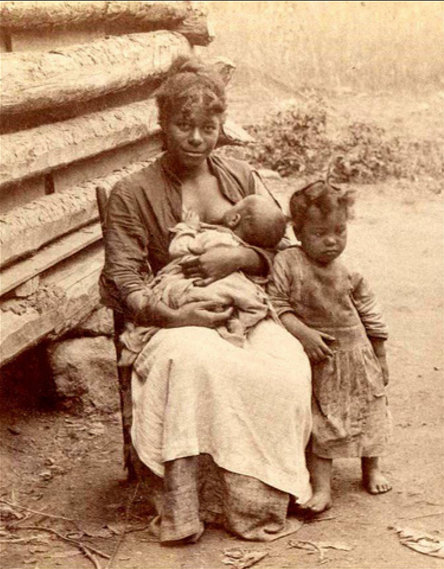
Wet Nursemaid: She was free, technically, and paid a wage of about 10 dollars a month. However, she was basically enslaved. She saw her own children once every 2 weeks, meaning she couldn’t use her own body to provide nourishment for her own children. To feed white children when you are racially oppressed by the white race was traumatizing to say the least. Negro nurses typically worked 14-16 hour days. She had to be at the child’s beck and call to feed and bathe this baby and take care of any older children in the household. It was dehumanizing and robbed her of her dignity.

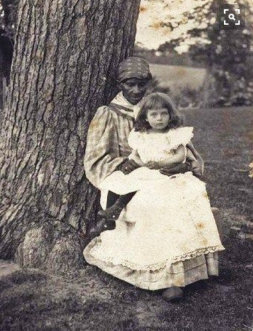

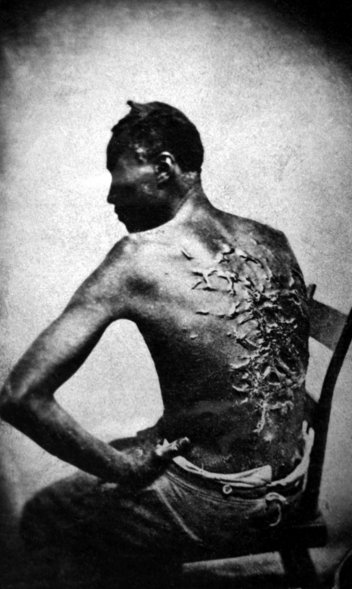
Gordon, or Whipped Peter, was a slave on a Louisiana plantation who escaped from slavery in 1863. He would go on to serve as a soldier in the United States Colored Troops. Harper’s Weekly published photos of Gordon’s scarred back, the result of his time in slavery. The photos helped make slavery more real for those living in the North and accelerated the Union cause in the war.

African-Americans made up less than 1 percent of the North’s population but were 10 percent of the Union Army. Black men weren’t allowed to join the army until 1863. About 180,000 Black men, more than 85 percent of eligible African-Americans in the Northern states, fought. While White soldiers earned $13 a month, Black soldiers earned only $10 — and then were charged a $3 clothing fee that lowered their monthly pay to $7. The highest paid Black soldier made less than the lowest paid White one. After protesting by refusing to accept their wages and gaining support from abolitionist Congressmen, Black soldiers finally received equal pay in 1864 — paid retroactively to their enlistment date.

Andrew Chandler and his slave Silas Chandler who accompanied his master to war as a “bodyguard.” This tintype is the only one of its kind showing a Confederate soldier with his slave. It was proven Silas was a slave through his pension records and he had not been set free or bought his freedom prior to the war and the Chandler family had not donated the land upon which Silas founded a church for former slaves after the war. The weapons in the famous photograph were props likely given to them just for the picture. READ MORE

Authored by Chuck Allen “Relentless Prison Ministry”
In 1866, one year after the 13 Amendment was ratified (the amendment that ended slavery), Alabama, Texas, Louisiana, Arkansas, Georgia, Mississippi, Florida, Tennessee, and South Carolina began to lease out convicts for labor (peonage). This made the business of arresting Blacks very lucrative, which is why hundreds of White men were hired by these states as police officers. Their primary responsibility was to search out and arrest Blacks who were in violation of Black Codes. Once arrested, these men, women and children would be leased to plantations where they would harvest cotton, tobacco, sugar cane. Or they would be leased to work at coal mines, or railroad companies. The owners of these businesses would pay the state for every prisoner who worked for them; prison labor.
It is believed that after the passing of the 13th Amendment, more than 800,000 Blacks were part of the system of peonage, or re-enslavement through the prison system. Peonage didn’t end until after World War II began, around 1940.
This is how it happened.
The 13th Amendment declared that “Neither slavery nor involuntary servitude, except as a punishment for crime whereof the party shall have been duly convicted, shall exist within the United States, or any place subject to their jurisdiction.” (Ratified in 1865)
Did you catch that? It says, “neither slavery nor involuntary servitude could occur except as a punishment for a crime”. Lawmakers used this phrase to make petty offenses crimes. When Blacks were found guilty of committing these crimes, they were imprisoned and then leased out to the same businesses that lost slaves after the passing of the 13th Amendment. This system of convict labor is called peonage.
The majority of White Southern farmers and business owners hated the 13th Amendment because it took away slave labor. As a way to appease them, the federal government turned a blind eye when southern states used this clause in the 13th Amendment to establish laws called Black Codes. Here are some examples of Black Codes:
In Louisiana, it was illegal for a Black man to preach to Black congregations without special permission in writing from the president of the police. If caught, he could be arrested and fined. If he could not pay the fines, which were unbelievably high, he would be forced to work for an individual, or go to jail or prison where he would work until his debt was paid off.If a Black person did not have a job, he or she could be arrested and imprisoned on the charge of vagrancy or loitering.
This next Black Code will make you cringe. In South Carolina, if the parent of a Black child was considered vagrant, the judicial system allowed the police and/or other government agencies to “apprentice” the child to an “employer”. Males could be held until the age of 21, and females could be held until they were 18. Their owner had the legal right to inflict punishment on the child for disobedience, and to recapture them if they ran away.
This (peonage) is an example of systemic racism – Racism established and perpetuated by government systems. Slavery was made legal by the U.S. Government. Segregation, Black Codes, Jim Crow and peonage were all made legal by the government, and upheld by the judicial system. These acts of racism were built into the system, which is where the term “Systemic Racism” is derived.This is the part of “Black History” that most of us were never told about.

Burying the Dead – Civil War
Whites Used Blacks as Alligator Bait
In 1908 the Washington Times reported that a keeper at the New York Zoological Garden baited “Alligators With Pickaninnies” out of their winter quarters. In the article two “small colored children happened to drift through the reptile house among the throng of visitors” and they were “pressed into service.” The alligators “wobbled out as quick as they could after the ebony mites, who darted around the tank just as the pursuing monsters fell with grunts of chagrin into the water.” The alligators were “coaxed” into their summer quarters by “plump little Africans”
The practice has been documented in at least three movies: “Alligator Bait” (1900) and “The ‘Gator and the Pickaninny” (1900). And the story of two black boys who served as alligator bait was told in “Untamed Fury” (1947).


Billie Holiday ~ Strange Fruit
WEB Du Bois writes of the April 23, 1899 lynching of Sam Hose in Georgia. Du Bois reported the knuckles of the victim were on display at a local store on Mitchell Street in Atlanta and a piece of the man’s heart and liver was presented to the state’s governor. https://historyengine.richmond.edu/episodes/view/502
Postcard depicting the lynching of Lige Daniels, Center, Texas, USA, August 3, 1920. 
This mans’ pants are pulled down to humiliate and scare him before he’s castrated then hung
 Laura Nelson Okemah OK May 25, 1911
Laura Nelson Okemah OK May 25, 1911
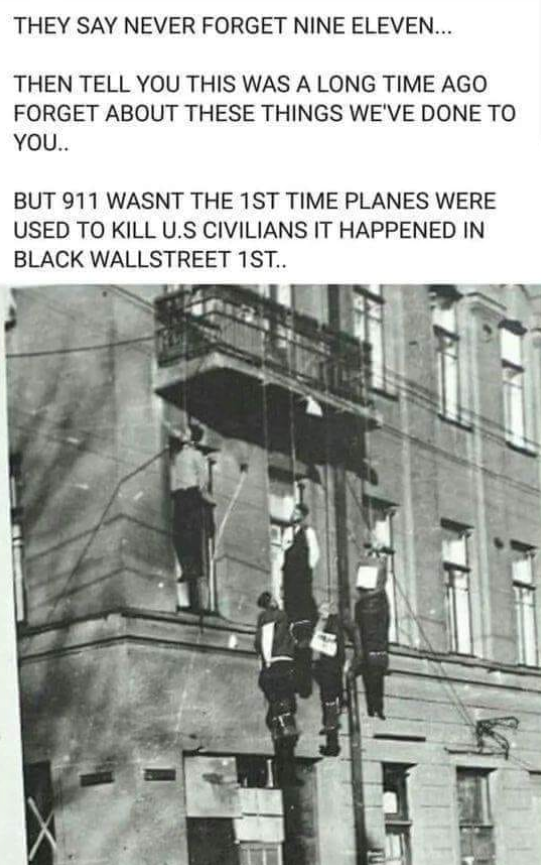
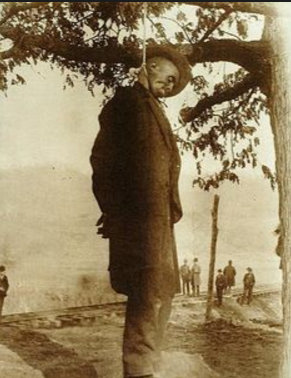
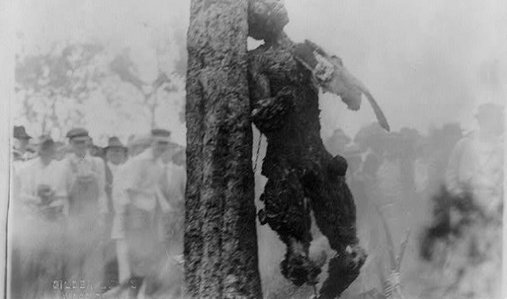 Jesse Washington 17 yr. old May 15, 1916 Waco TX
Jesse Washington 17 yr. old May 15, 1916 Waco TX
Washington was accused of raping and murdering Lucy Fryer, the wife of his white employer in rural Robinson TX . Washington a mildly mentally challenged was tried for murder in Waco, in a courtroom filled with furious locals. The trial lasted about one hour and after four minutes of deliberation, the jury’s foreman announced a guilty verdict and a sentence of death. After his sentence was pronounced, he was dragged out of the court by observers, they put a chain on his neck and lynched him in front of Waco’s city hall. Over 16,000 spectators, including city officials and police, gathered to watch the attack. There was a celebratory atmosphere at the event, and many children attended during their lunch hour. Members of the mob castrated Washington, cut off his fingers so he couldn’t climb the chain, and hung him over a bonfire. He was repeatedly lowered and raised over the fire for about two hours. After the fire was extinguished, his charred torso was dragged through the town and parts of his body were sold as souvenirs. A professional photographer took pictures as the event unfolded, providing rare imagery of a lynching in progress. The pictures were printed and sold as postcards in Waco.
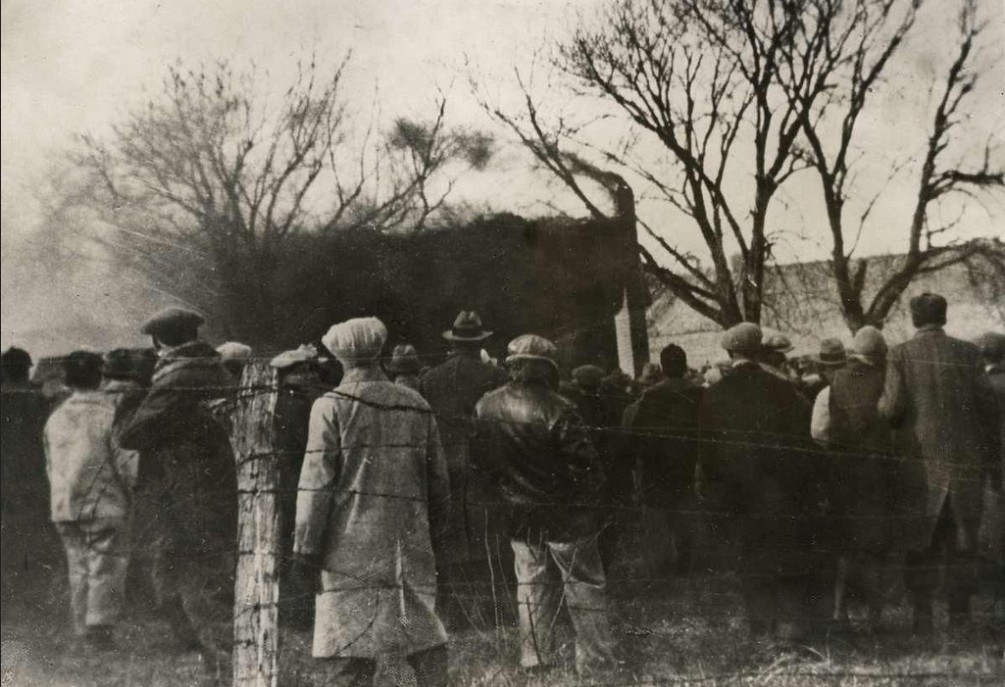
In the 1931 Maryville, Missouri, lynching of Raymond Gunn, the crowd estimated at 2,000 to 4,000 was at least a ¼ women, and included hundreds of children. One woman “held her little girl up so she could get a better view of the naked Negro blazing on the roof. After the fire was out, hundreds poked about in his ashes for souvenirs. “The charred remains of the victim were divided piece by piece,”


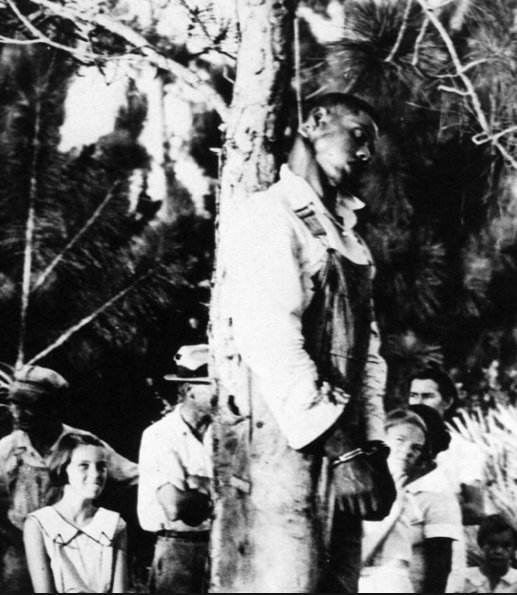
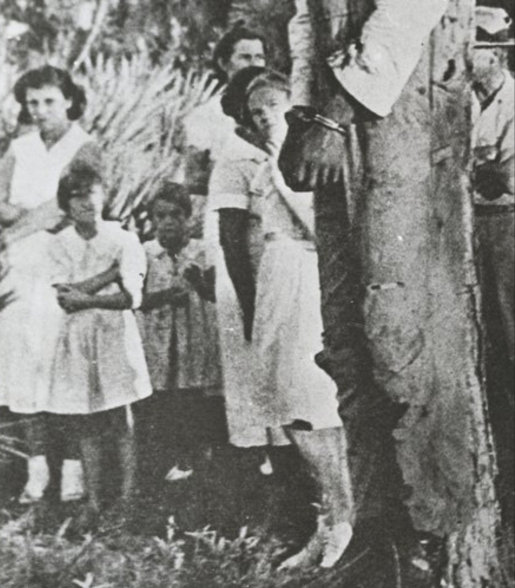
 (photo above) July 19, 1935 Ruben Stacy 32 hangs from a tree in Ft. Lauderdale FL. Stacy was lynched by a mob of angry masked White men who seized him from the custody of sheriff’s deputies for allegedly attacking a white woman.
(photo above) July 19, 1935 Ruben Stacy 32 hangs from a tree in Ft. Lauderdale FL. Stacy was lynched by a mob of angry masked White men who seized him from the custody of sheriff’s deputies for allegedly attacking a white woman.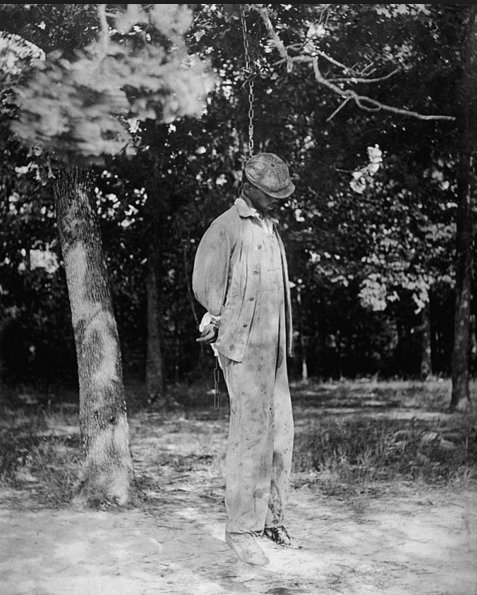

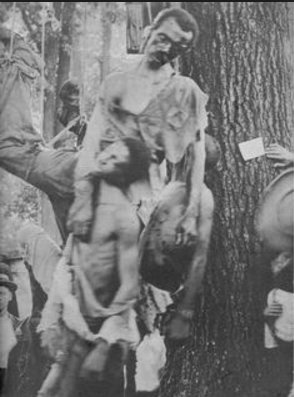







There’s a note attached to a body which reads: “Let this be a warning to you niggers to let white people alone or you will go the same way”
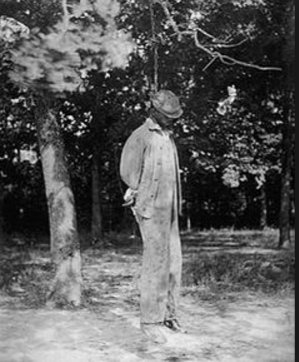
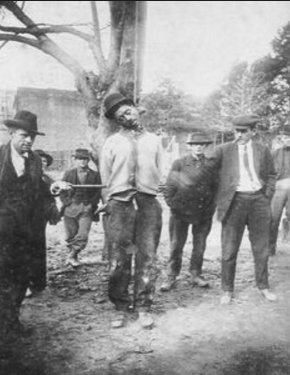
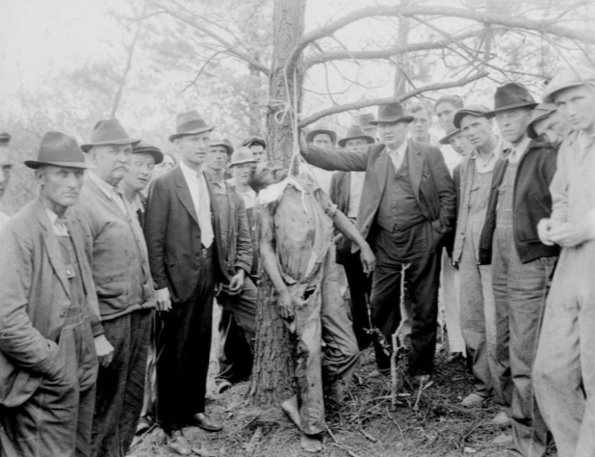
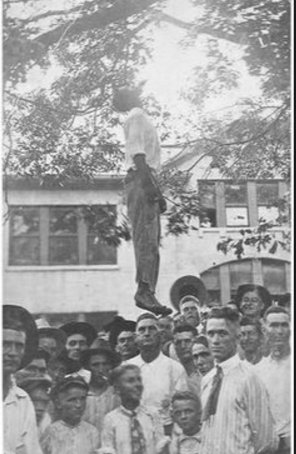
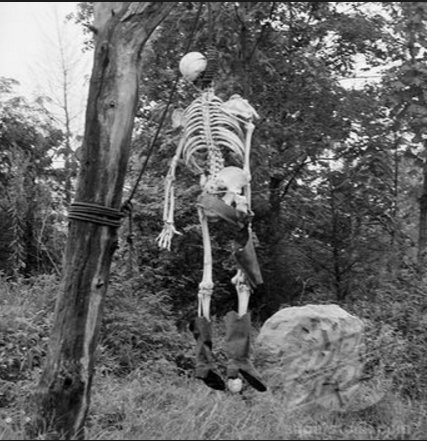
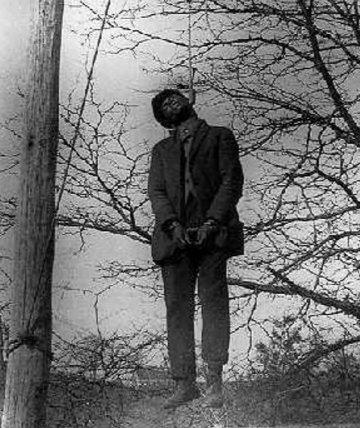

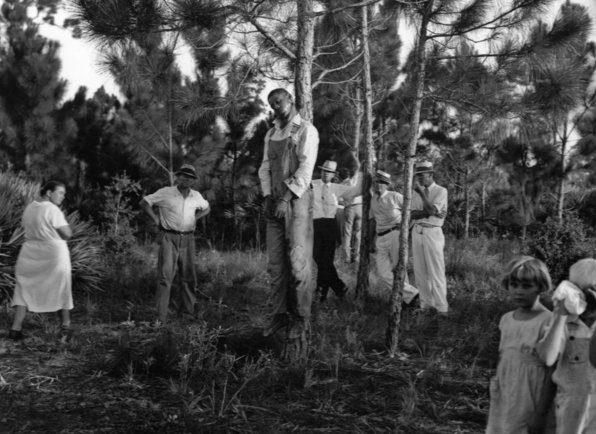
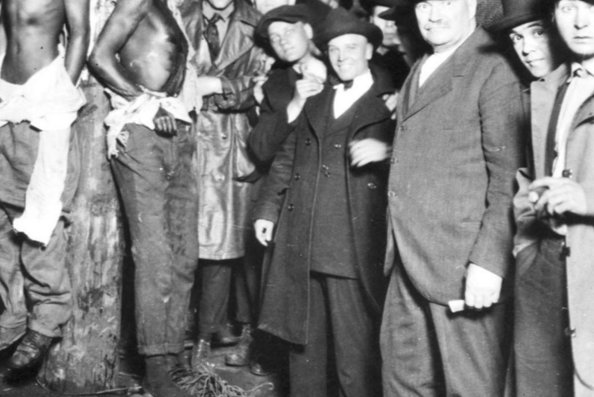
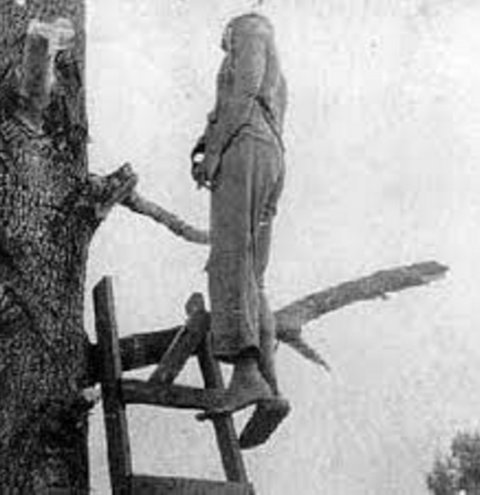

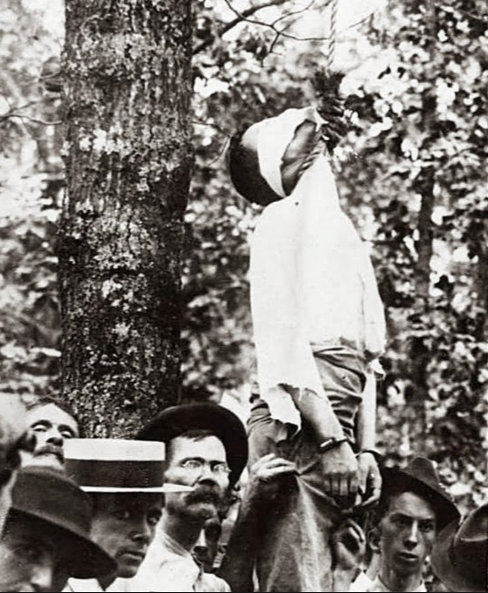
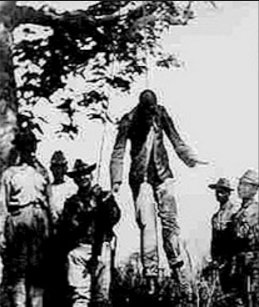
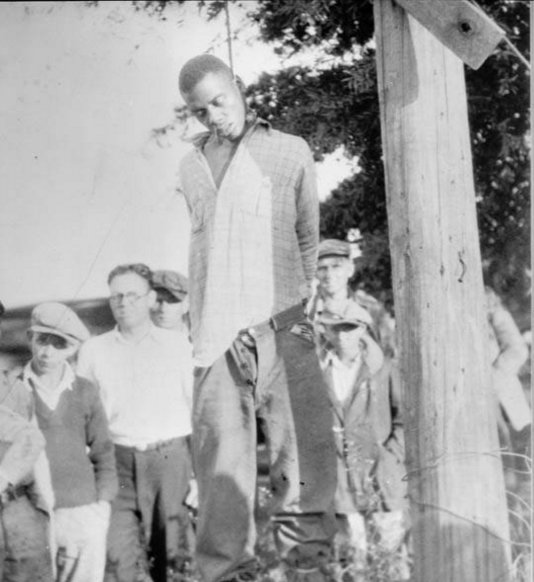

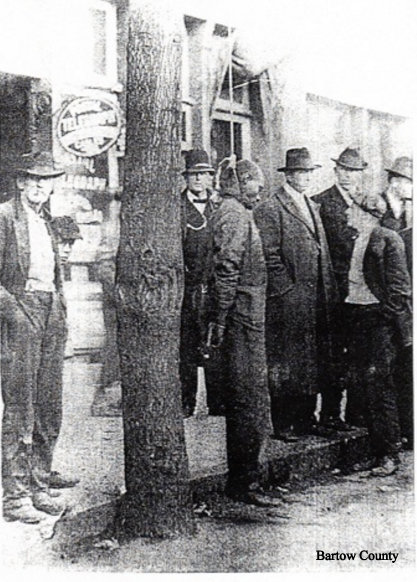
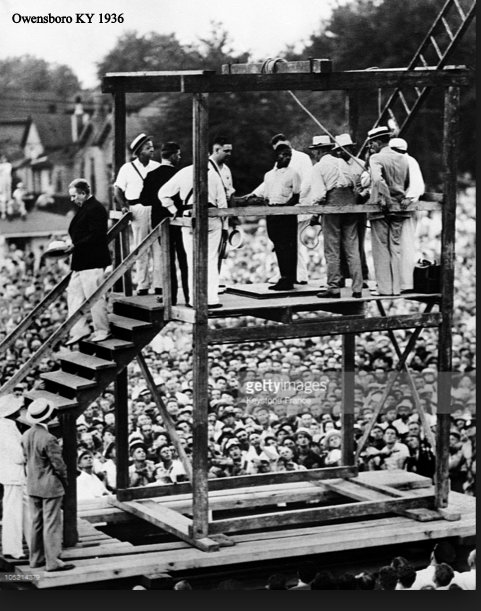
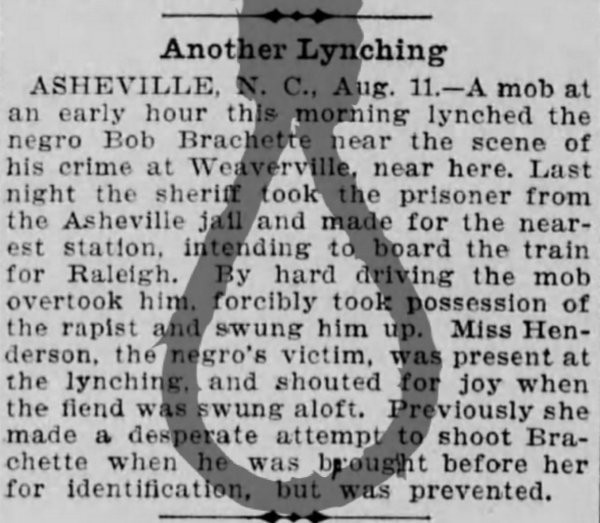
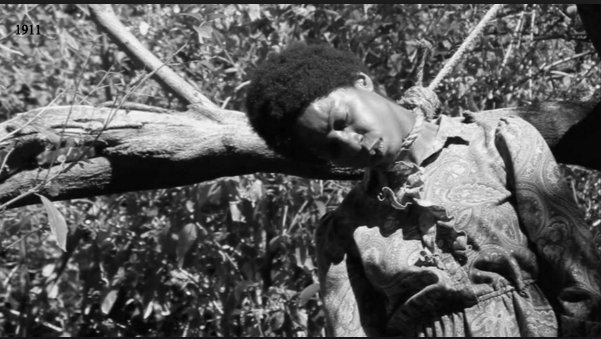
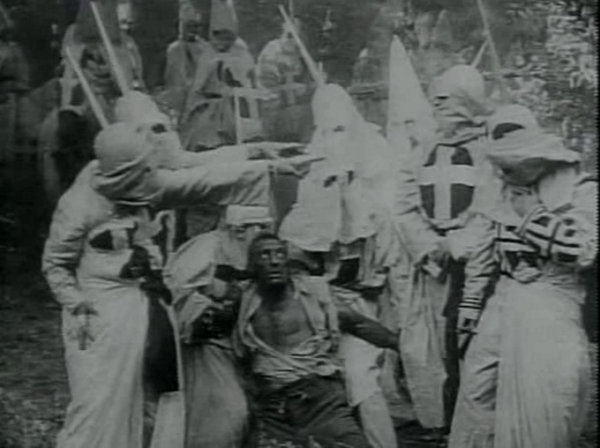
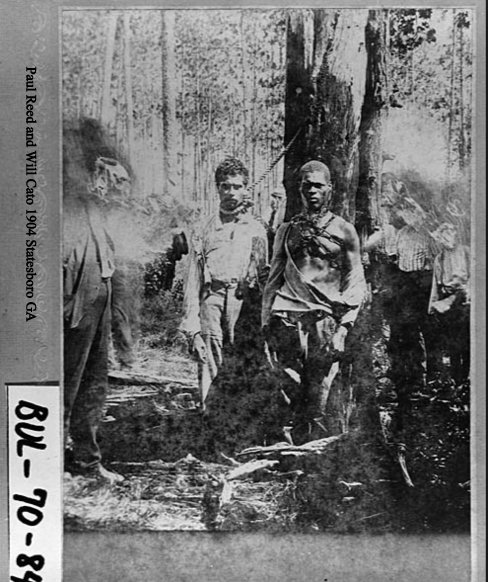

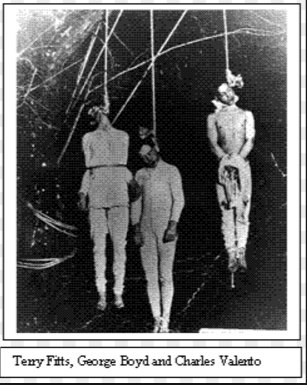

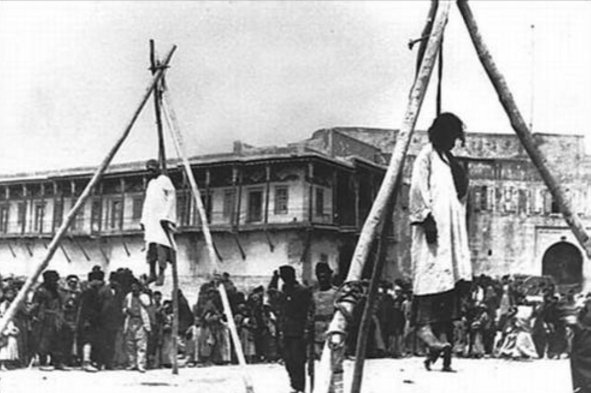
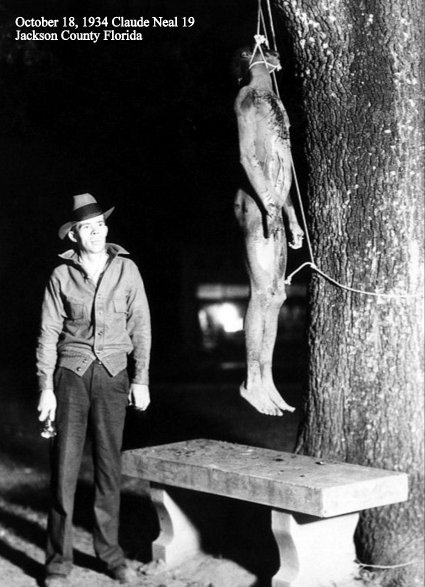
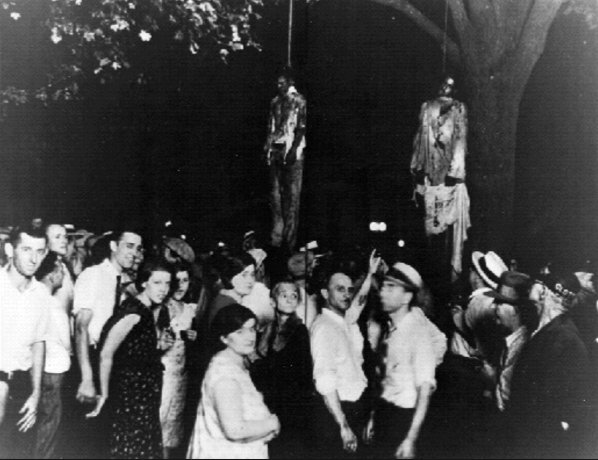
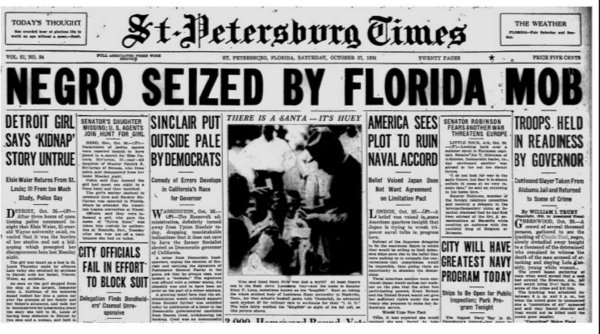

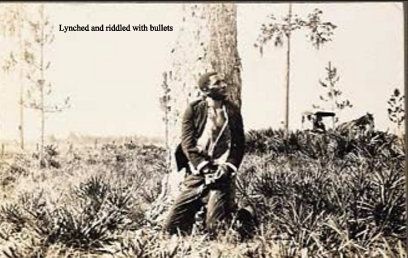
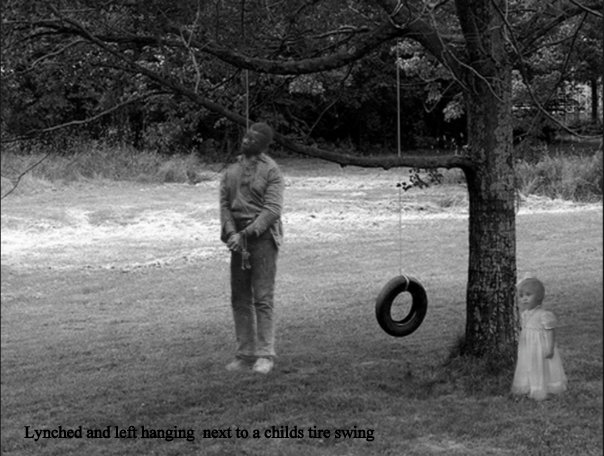
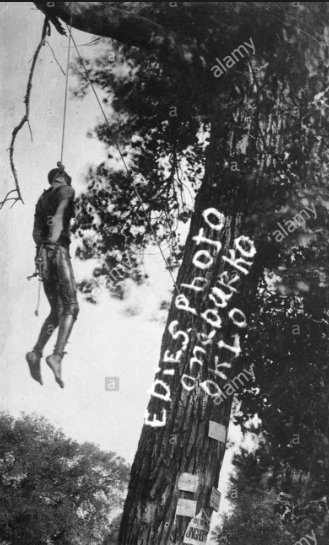
Bennie Simmons soaked in coal oil before being set on fire
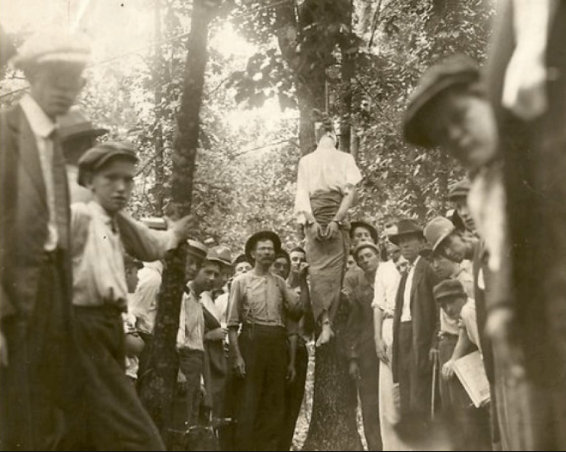
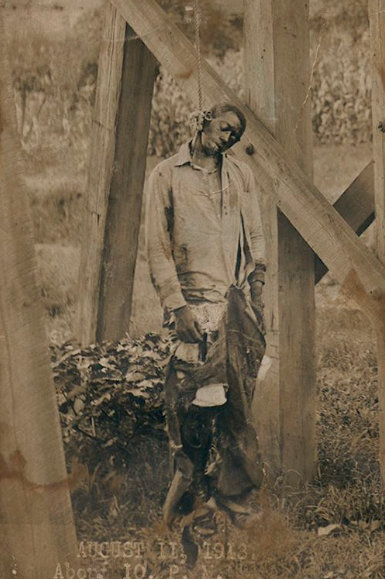
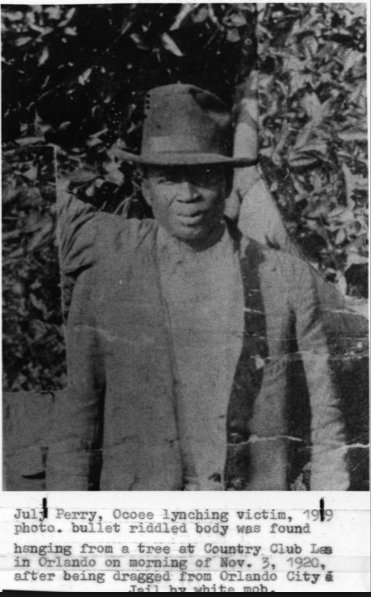
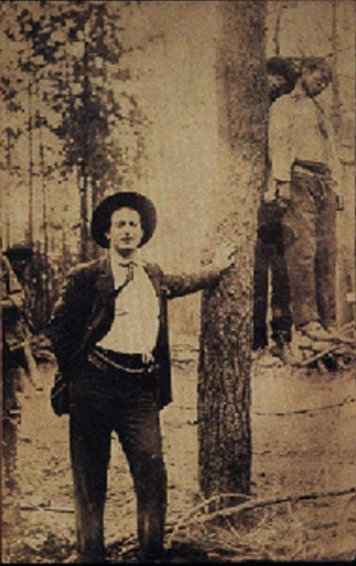
April 30, 1892
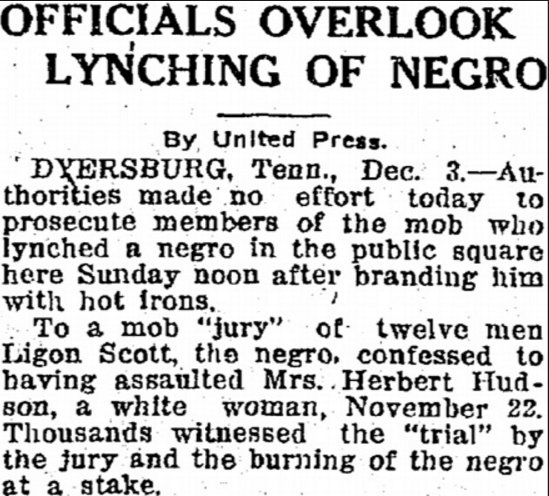
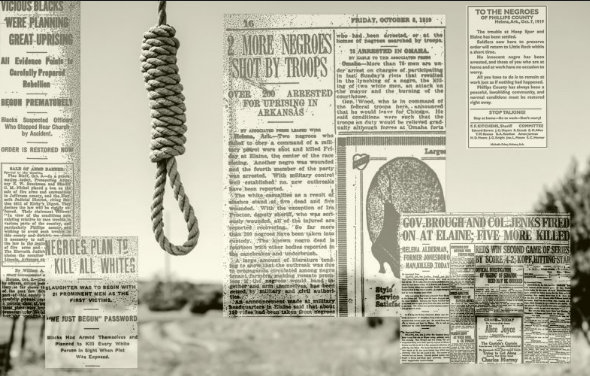
In 1919, in the wake of World War I, Black sharecroppers unionized in Little Rock Arkansas, which unleashed a wave of White Vigilantism and mass lynching’s leaving 237 people dead.
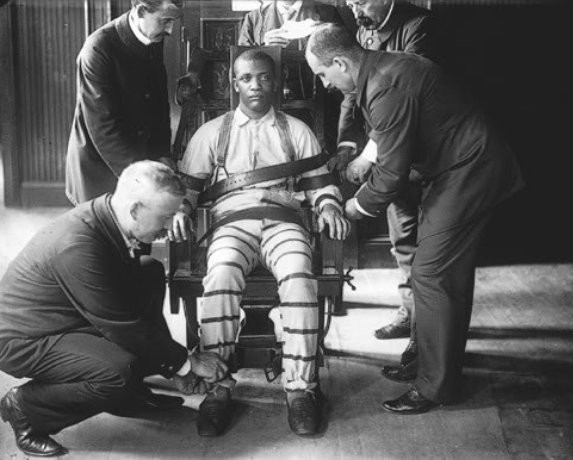
If you were a Black defendant, good luck challenging the prosecutor who eliminated potential witnesses or impartial jurors.
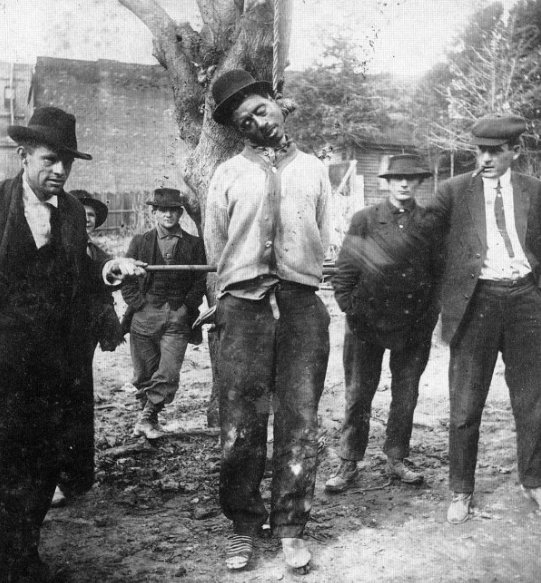
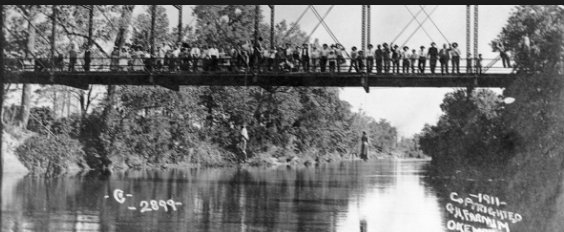
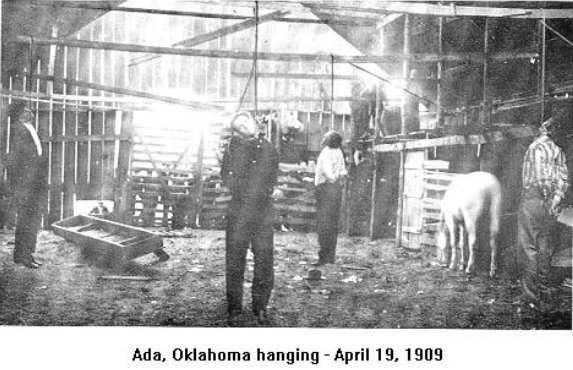
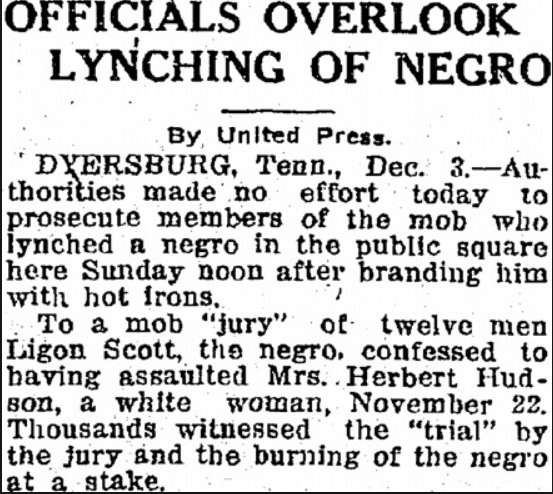
The Tulsa race massacre of 1921 took place on May 31 and June 1, 1921, when mobs of white residents attacked black residents and businesses of the Greenwood District in Tulsa, Oklahoma. It has been called “the single worst incident of racial violence in American history
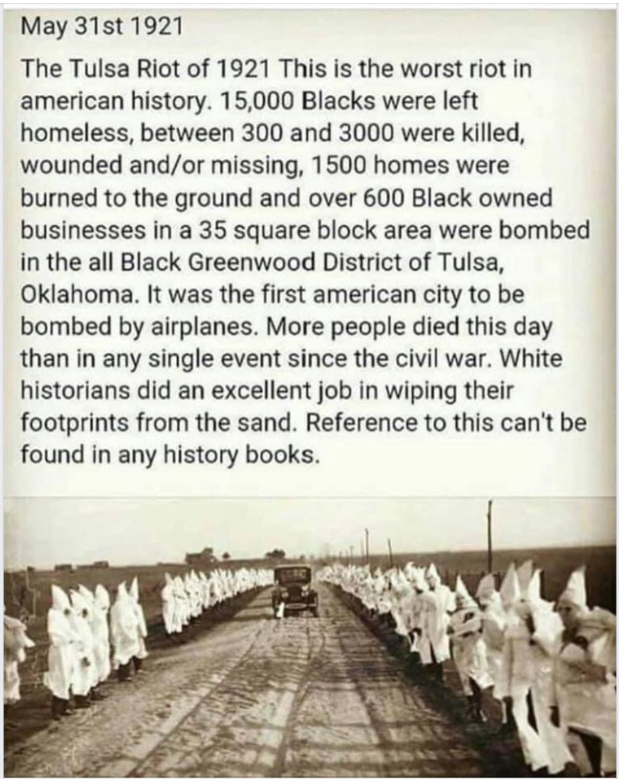
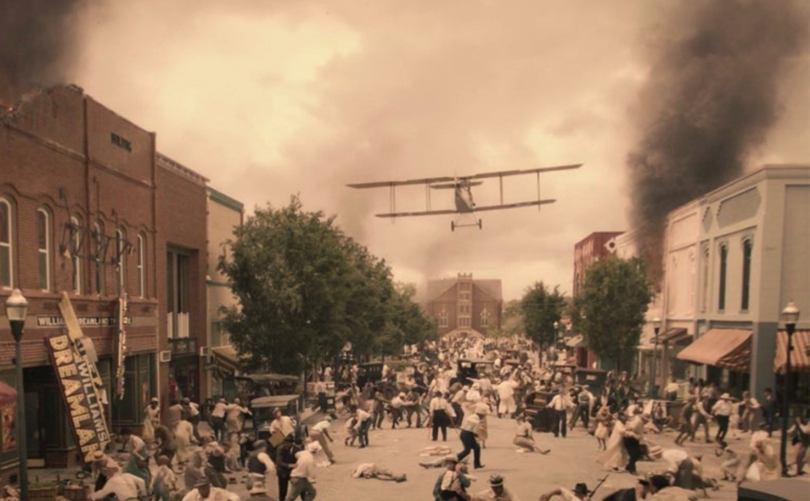
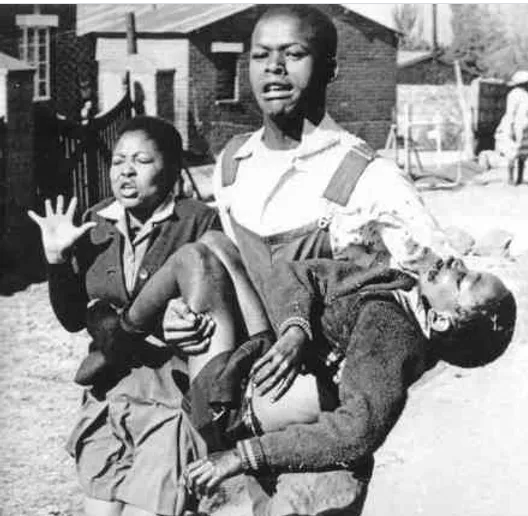
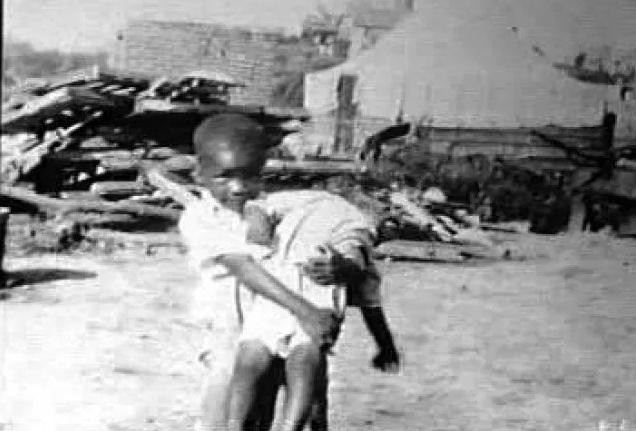
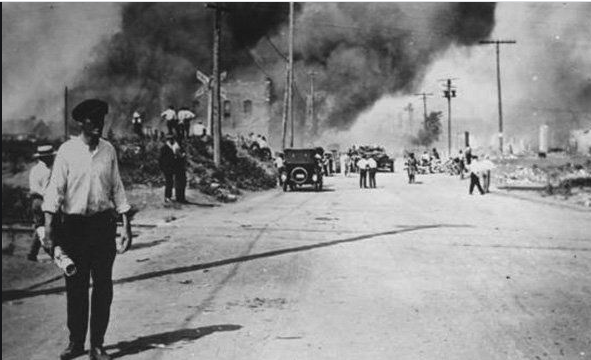
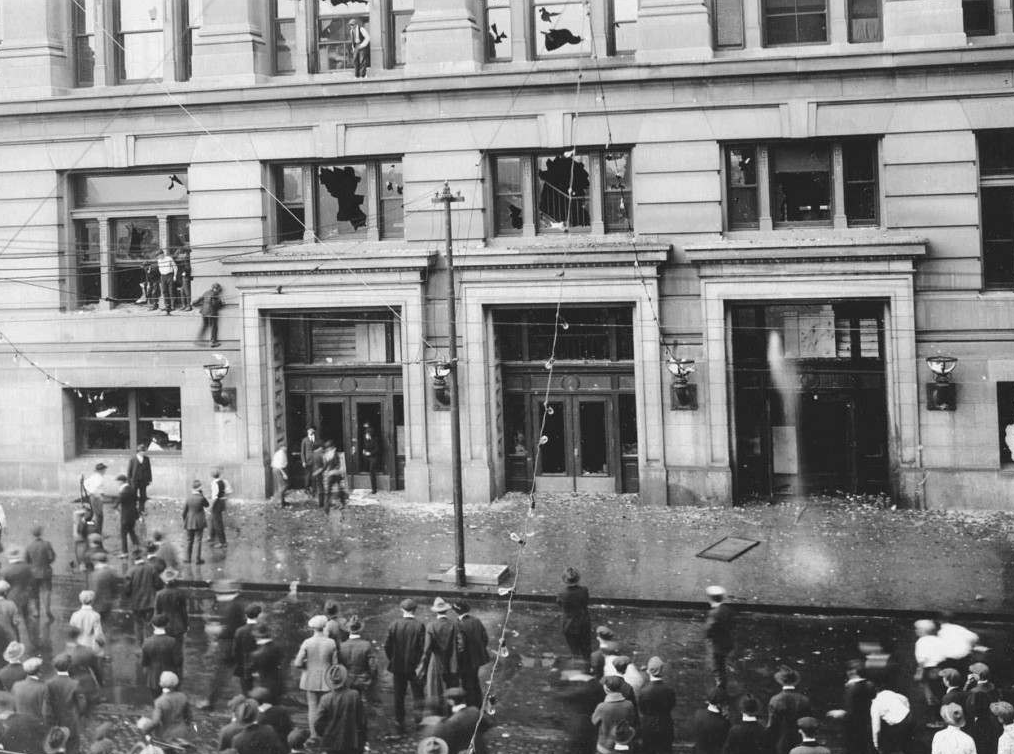
White rioters converge outside the Douglas County Courthouse. On Sept. 27, 1919, an angry mob grabbed William Brown, a Black man, inside the courthouse after he was accused of mugging a White, handicapped man and raping the man’s fiancée. Brown was stripped, beaten unconscious and castrated before hundreds of bullets were fired into his body as he was dragged by an automobile and hanged from a downtown light pole.
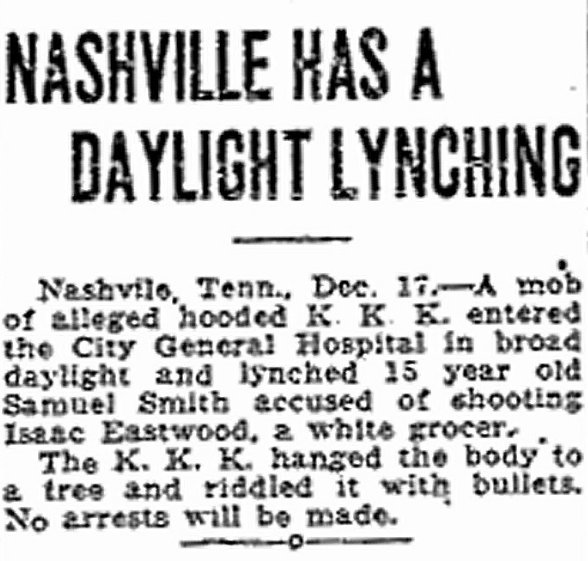
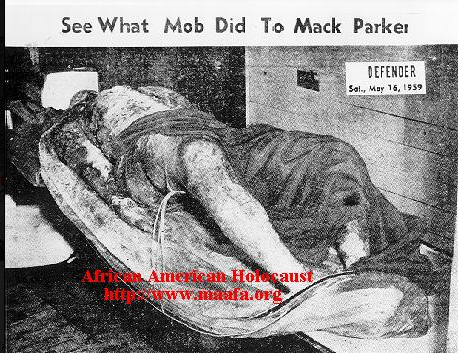
In a flag draped casket, the body of Mack Charles Parker a victim of a lynch mob is lowered into a grave. Awaiting trial on charges of having raped a pregnant white woman Parker was dragged from his unguarded cell, beat him, took him to Louisiana and then shot him by a masked mob in Poplarville in Mississippi and his body was found May 4, 1959. Although Parker’s abductors were well known and some admitted their complicity to FBI agents, the judge in the case, Sebe Dale, a white supremacist and member of the White Citizens’ Council encouraged the grand jury to return no indictments against the killers. Parker’s lynching continues to resonate after 50 years because of the unresolved issues and is among 43 unpunished killings in Mississippi from the civil rights era that the FBI is now seeking help in solving.
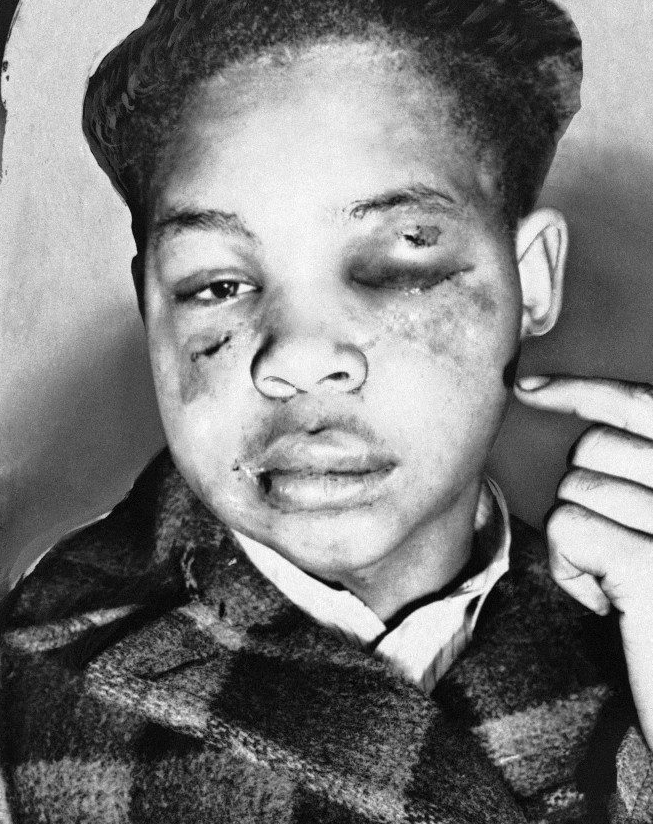
Lamar Howard, 19, of Monroe, Ga., points to bruises he said he received in Atlanta from two White men, Jan. 2, 1947. Howard said they tried to force from him his testimony before a federal grand jury investigation the lynching of four blacks near Monroe in the summer 1946.
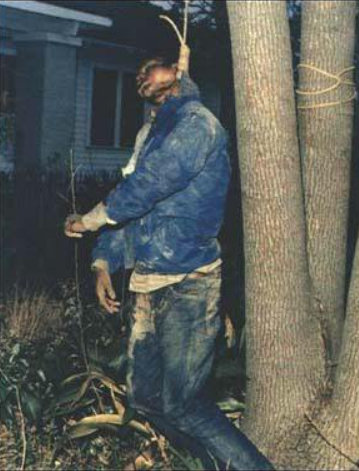
March 21, 1981 Michael Donald, 20 years old lynched by the Ku Klux Klan – Last reported lynching, although not the last lynching in Mobile, Alabama, was one of the last reported lynching’s in the United States. Several Ku Klux Klan members beat and killed Michael Donald, and hung his body from a tree.
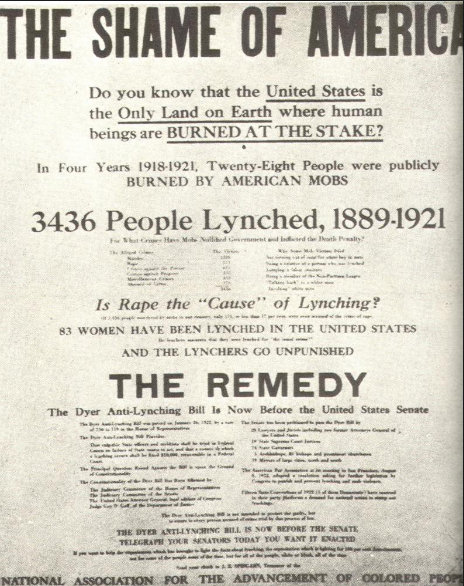
Human Zoo’s


Ota Benga (c. 1883 – March 20, 1916) was a Congolese man, a Mbuti pygmy known for being featured in an anthropology exhibit at the Louisiana Purchase Exposition in St. Louis, Missouri in 1904, and in a human zoo exhibit in 1906 at the Bronx Zoo. Benga had been purchased from African slave traders by the explorer Samuel Phillips Verner, a businessman hunting Africans for the Exposition.
Displays of non-white humans as examples of “earlier stages” of human evolution were common in the early 20th century, when racial theories were frequently intertwined with concepts from evolutionary biology. Read more about Ota https://en.wikipedia.org/wiki/Ota_Benga

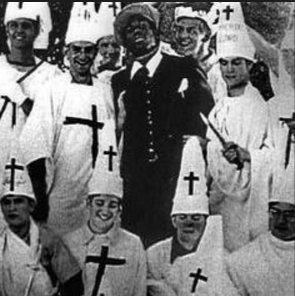
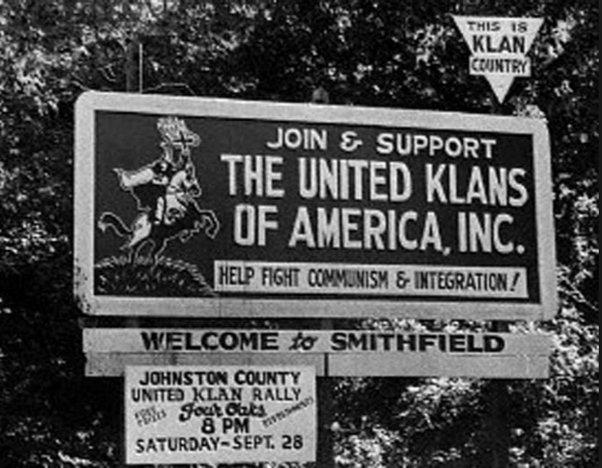
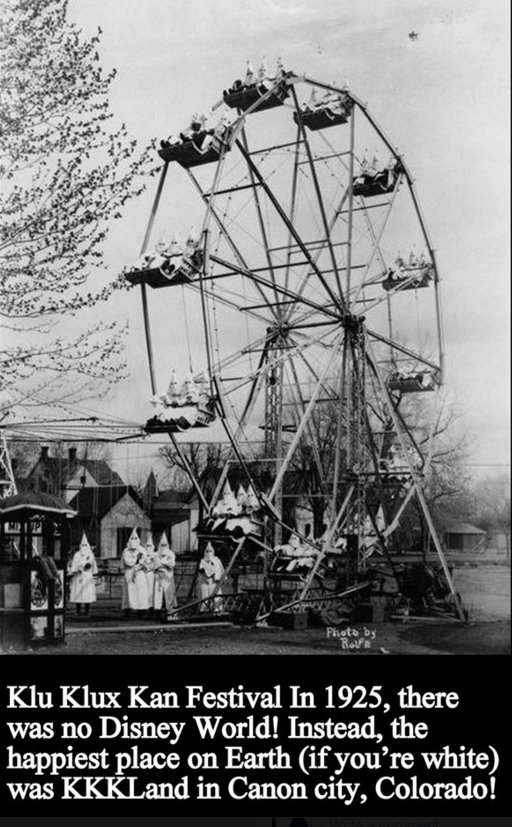
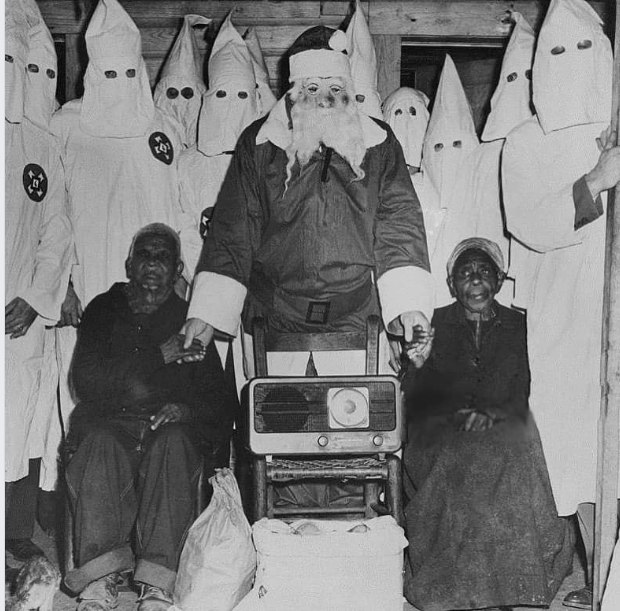
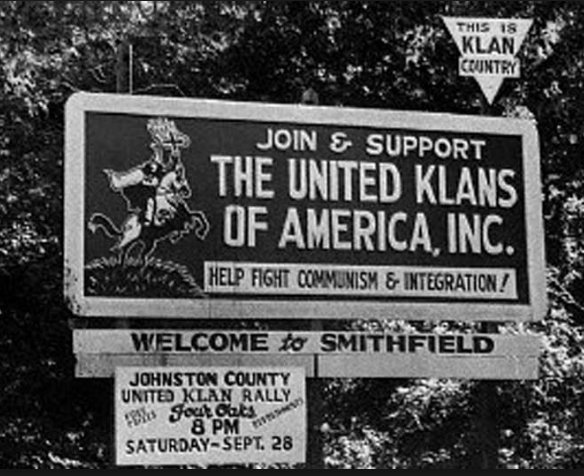


Tuskegee Syphilis Experiment
The Tuskegee syphilis experiment was an infamous clinical study conducted between 1932 and 1972, ran for forty years in Macon County, Alabama during the mid-20th century, is one of the more appalling and deceitful of the bunch.by the U.S. Public Health Service to study the natural progression of untreated syphilis in rural African American men who thought they were receiving free health care from the U.S. government.
Public Health Service enrolled six hundred Macon County men, 399 with syphilis and 201 who weren’t infected, to be part of the study. None of the men actually knew what the study was for. They were lured in with the promise of “free health care,” something that none of them had, and treatment of “bad blood,” a general localized term that encompassed several different afflictions, including anemia, fatigue, and other venereal diseases.
The men were told that they were going to get free medical exams, meals, and burial insurance. For those who actually had syphilis, they were never informed of their diagnosis nor given any treatment for it. Additionally, very painful and unnecessary spinal taps were performed on many in the study.
Subjects of the Tuskegee Syphilis Experiment were never administered nor offered penicillin as treatment. The study administrators wanted to watch the progression of the disease as the men got sick and, in many cases, died for the forty years the study went on even though for much of it a relatively effective treatment was available. All total it’s estimated that 128 of the men died either directly from syphilis or complications related to it, 40 infected their wives (and in some cases possibly others), and there were 19 of the men’s children born with congenital syphilis.




When asked why they had to receive several “back shots” (spinal taps) researcher’s repeatedly lied to the men, claims the shots were “therapeutic” when in fact the spinal taps gave insight to the infection from the spine canal to the brain.
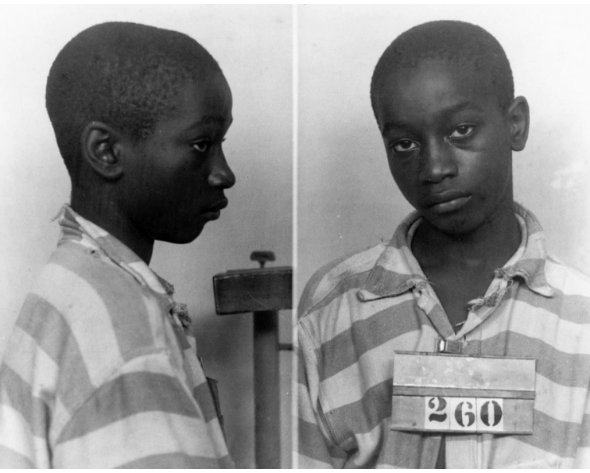
George Junius Stinney Jr. (October 21, 1929 – June 16, 1944) just 14 years old was arrested for murdering two white girls, Betty June Binnicker, age 11, and Mary Emma Thames, age 7, deep in Jim Crow South in Alcolu, located in Clarendon County, South Carolina, on March 23, 1944. The girls disappeared while out riding their bicycle looking for flowers. As they passed the Stinney property, they asked young George Stinney and his sister, if they knew where to find “maypops” flower. When the girls didn’t return, search parties were organized, the girl’s bodies were found the next morning in a ditch filled with muddy water. Both had suffered severe head wounds.
Stinney was arrested within a few hours and he interrogated by several white officers in a locked room with no parents, no attorney and no witnesses aside from the officers. Within an hour, a deputy announced Stinney had confessed to the crime and led officers to “a hidden piece of iron”. There was no written record of his confession, only notes by an investigating deputy, and no transcript was recorded.
According to the alleged confession, Stinney (90 lbs, 5’1″) wanted to “have sex with”11-year-old Betty June Binnicker and could not do so until Mary Emma Thames, age 8, was removed from the scene; he decided to kill Mary Emma, both girls “fought back” so he decided to kill Betty June as well with a 15 inch railroad spike found in the same ditch a distance from the bodies.
A 2-hour trial was held, Stinney’s attorney did not cross-examine witnesses, his defense consisted of the claim Stinney was too young to be held responsible for the crimes. The all-white jury deliberated 10 minutes and found Stinney guilty of first-degree murder. That same day, the judge sentenced the teen to death by electric chair.
The execution was carried out at the South Carolina State Penitentiary in Columbia, South Carolina on the morning of June 16, 1944, 83 days after the crime. At 7:30 a.m. Stinney walked to the execution chamber, a bible under his arm which he used as a booster seat in the electric chair. There were difficulties strapping the boy who at 5’1” and just over 90 lbs. In addition, the face mask used in executions did not fit properly. When officials turned on the switch, 2,400 volts surged through Stinney’s body, causing the mask to slip off. His eyes were wide and teary, and saliva was emanating from his mouth for all the witnesses in the room to see. After two more jolts of electricity, it was over. Stinney was pronounced dead at 7:30 p.m., four minutes after the execution began and 83 days after the murders.
A deathbed confession by the culprits from a prominent tight-knit well-known white family stated: “A member, or members of our family, served on the initial coroner’s inquest jury which had recommended Stinney be prosecuted.”
The “piece of iron” with which the two girls had been killed weighed over twenty pounds. It was ruled George wasn’t able to lift it, let alone swing it hard enough to kill the two girls. 70 years later, on December 17, 2014, Judge Carmen T. Mullen overturned Stinney’s first-degree murder conviction, stating his sentencing was “cruel and unusual.” She wrote there was “a violation of the defendant’s procedural due process rights that tainted his prosecution. George Stinney is the youngest person in the United States ever put to death by the electric chair.
Cousins Recall Emmett Louis Till’s Murder
https://whatzenalotionbar.wordpress.com/emmett-tills-cousins-recall-historic-murder/
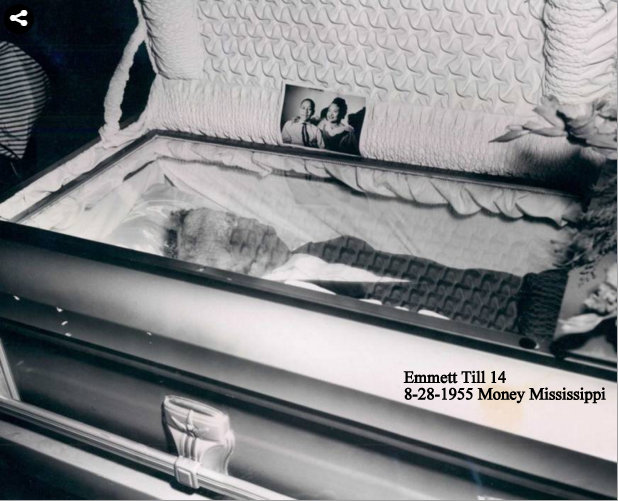

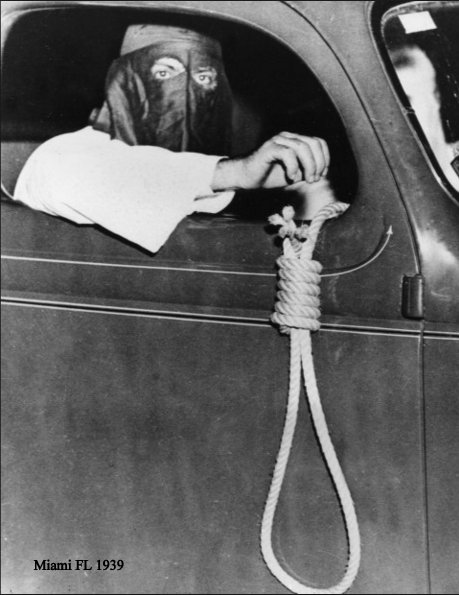
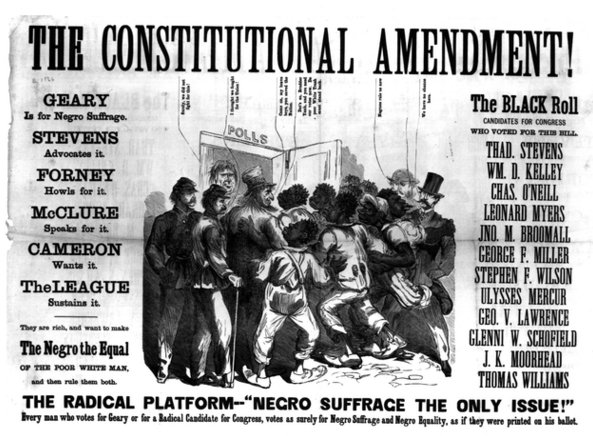
A poster rallying White voters to oppose enfranchisement allowing African American’s to vote
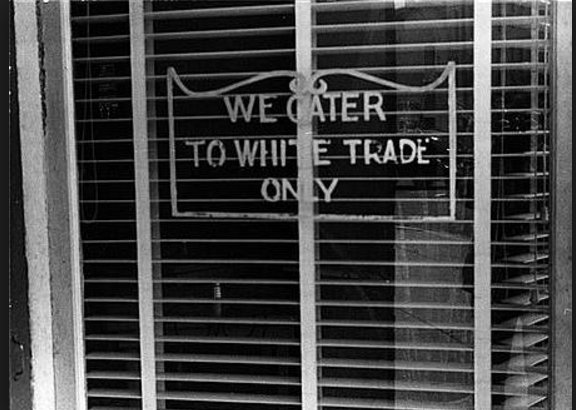
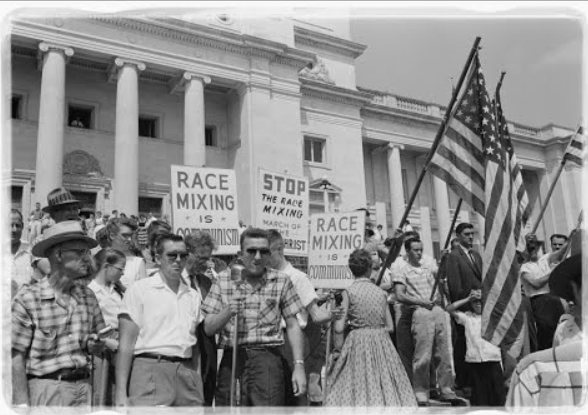
Lancaster Ohio 1938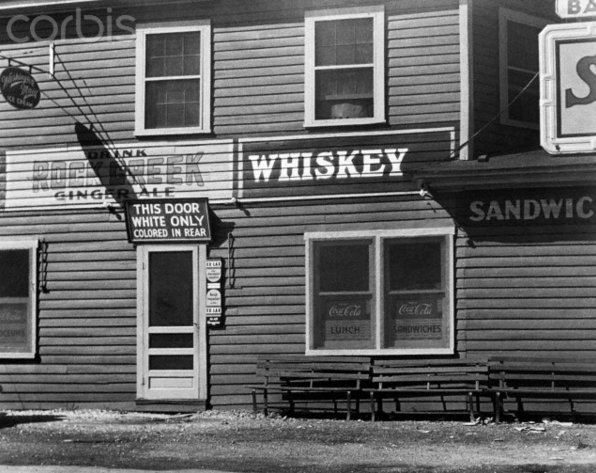
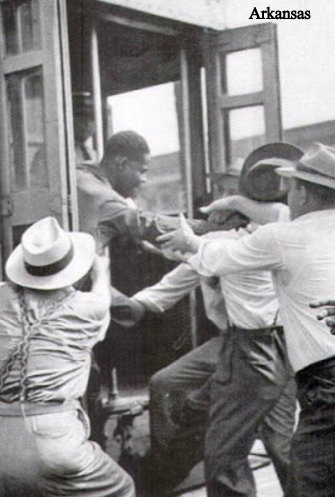
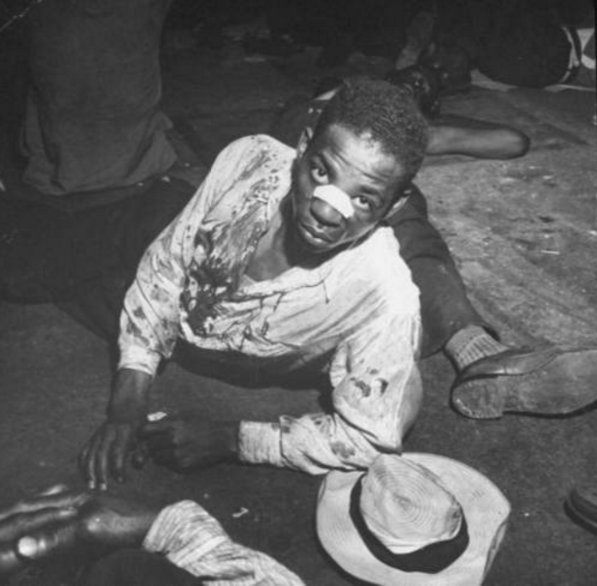
Detroit

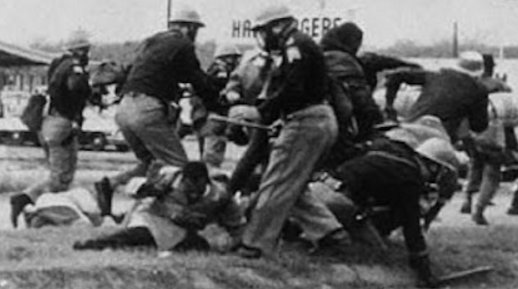
Alabama State Troopers Attack John Lewis st the Edmund Pettis Bridge

Mumia Abu Jamal in his younger years as a member of The Philadelphia Chapter of the Black Panthers Party for Self Defense.

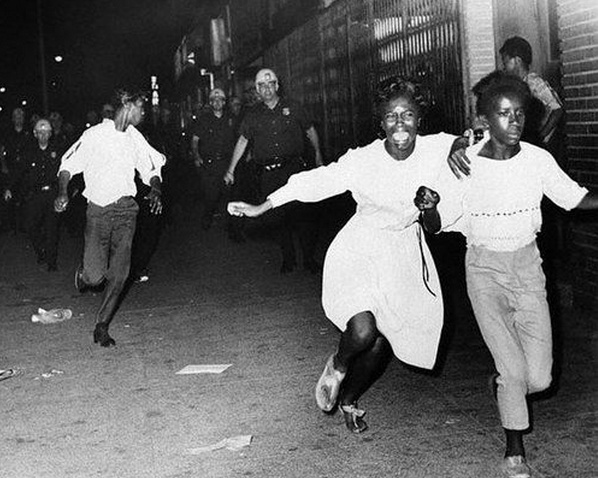

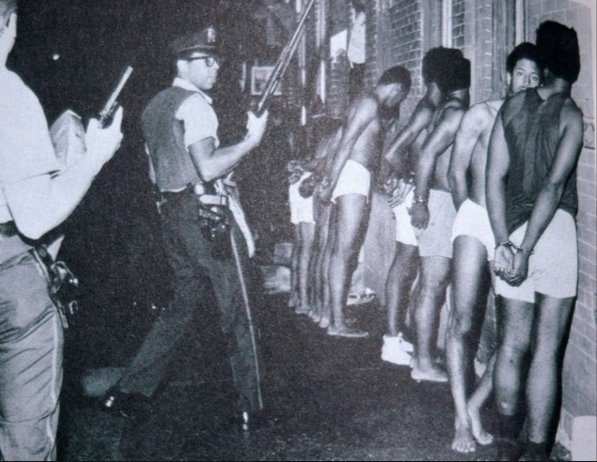
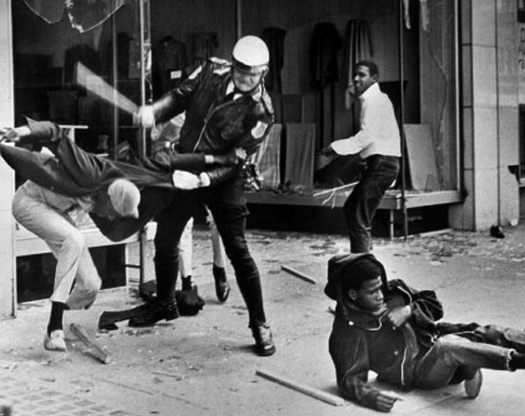
1963 Demonstration Virginia



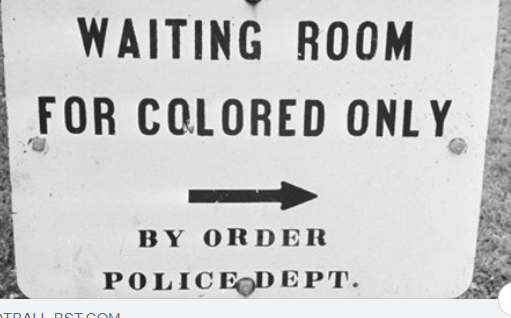

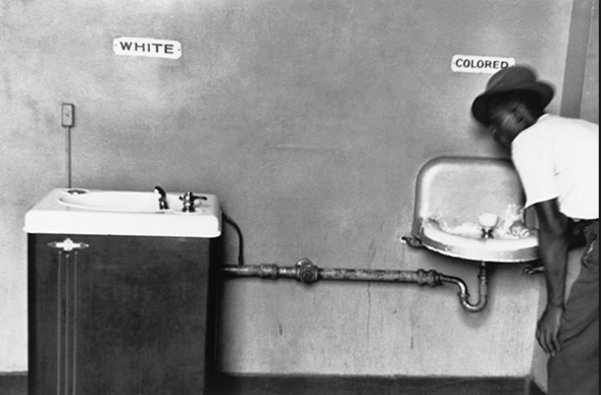
Segregated drinking fountains No. Carolina 1950


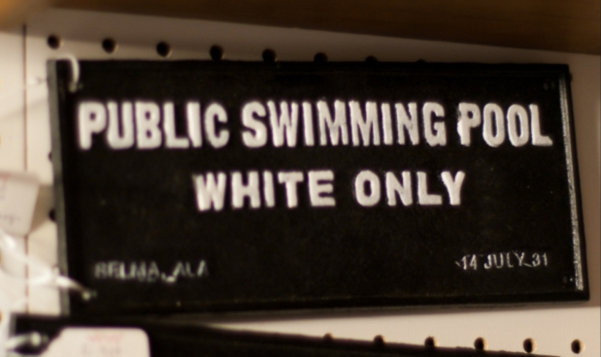


1963 Brother Malcolm Nation Building

White people abusing Blacks by pouring food and drinks on Black people


Seen around the borders of the curfew zone which makes explicit the policies of White People’s racism



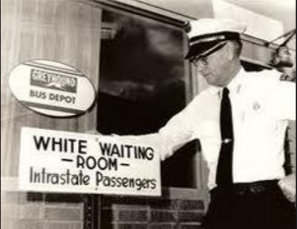
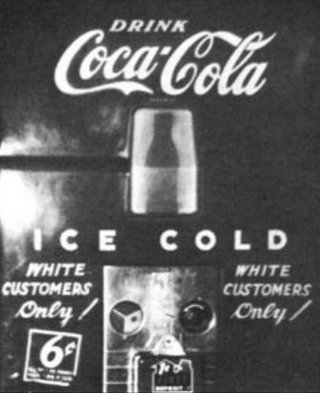
 September 10, 1963 a white student had been photographed wearing a sign on his shirt that read “Keep West End White.” On either side of the word “Keep” appeared two Confederate flags
September 10, 1963 a white student had been photographed wearing a sign on his shirt that read “Keep West End White.” On either side of the word “Keep” appeared two Confederate flags
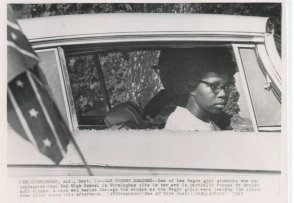 “Birmingham, ALA., Sept. 11, 1963 —CAR WINDOW SMASHED—One of two Negro girl students who desegregated West End High School in Birmingham sits in car and is partially framed by broken auto window. A rock was hurled through the window as the Negro girls were leaving the school area after class this afternoon. (APWirephoto) 1963”
“Birmingham, ALA., Sept. 11, 1963 —CAR WINDOW SMASHED—One of two Negro girl students who desegregated West End High School in Birmingham sits in car and is partially framed by broken auto window. A rock was hurled through the window as the Negro girls were leaving the school area after class this afternoon. (APWirephoto) 1963”
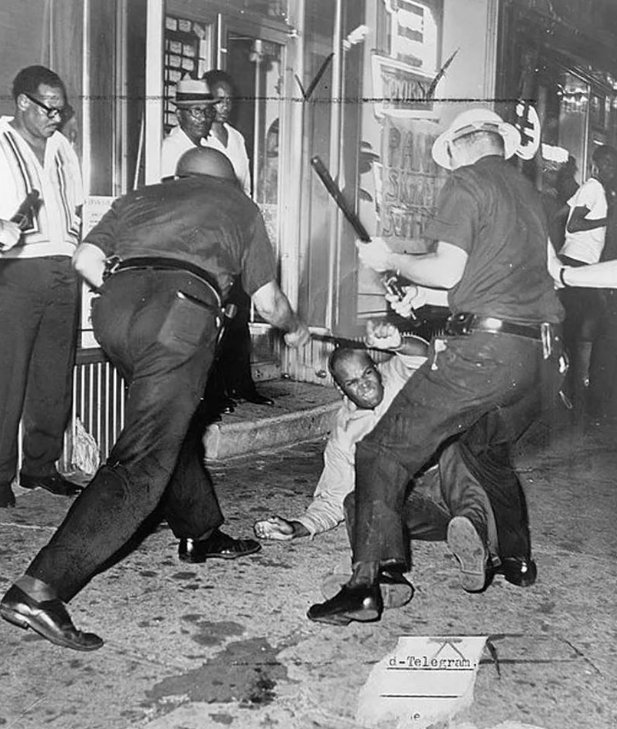
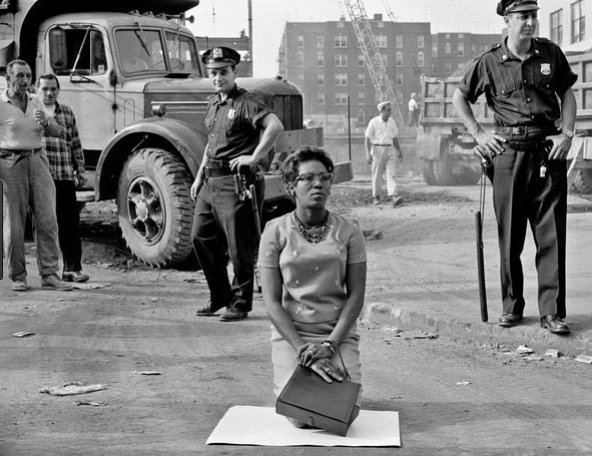
1963 “Civil Disobedience” Brooklyn’ s Downstate Medical Center NY Solitary woman’s act of defiance was far from the deep South
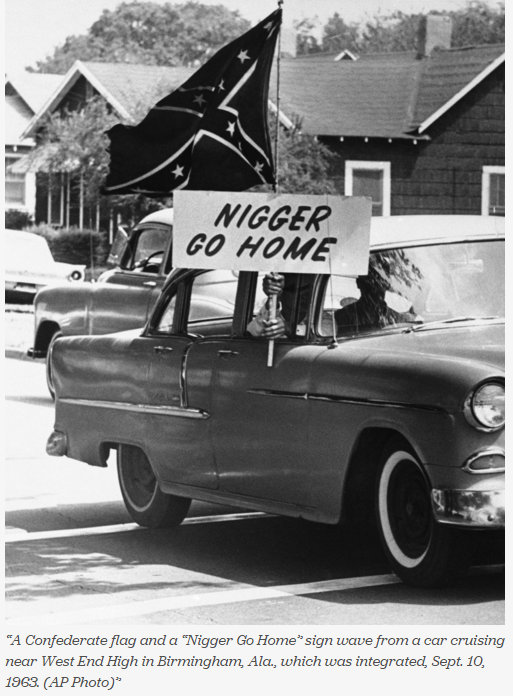
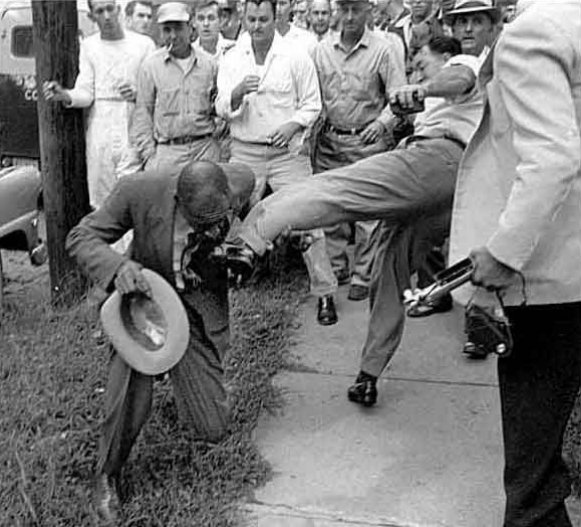
Black man being forced to kiss the foot of some White man
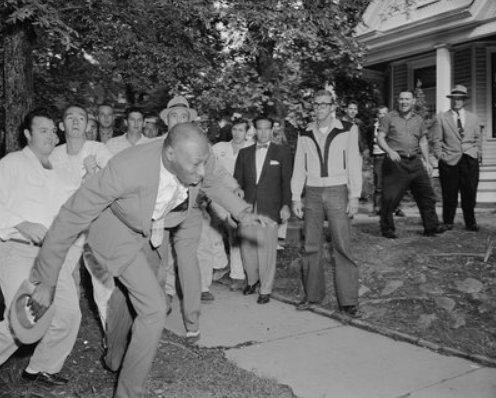
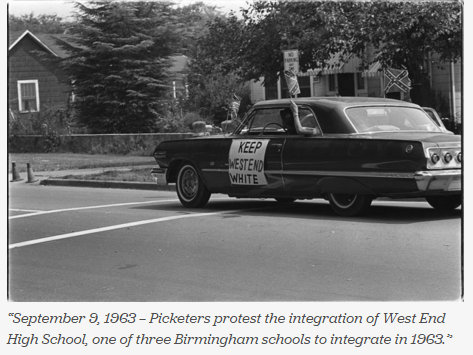

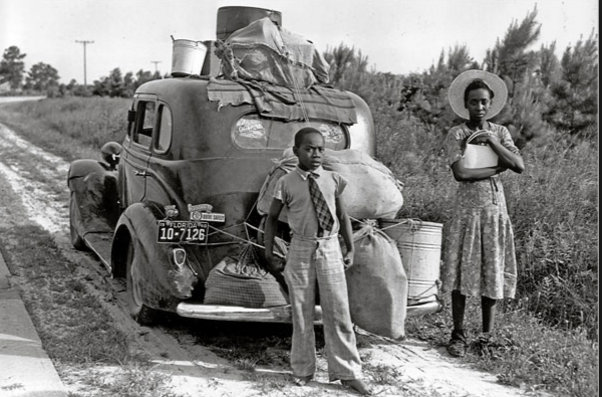 Mississippi
Mississippi

Jim Crow Museum of Racist Memorabilia
The Jim Crow Museum of Racist Memorabilia at Ferris State University, Big Rapids, Michigan, displays a wide variety of everyday artifacts depicting the history of racist portrayals of African Americans in American popular culture.
1010 Campus Dr, Big Rapids, MI 49307
https://ferris.edu/jimcrow/
Explaining White Privilege to a Broke White Person


Jim Zwerg
In 1961, the Congress of Racial Equality (CORE) began to organize Freedom Rides. The first departed from Washington DC and involved 13 black and white riders who rode into the South challenging white only lunch counters and restaurants. When they reached Anniston, Alabama one of the buses was ambushed and attacked. Meanwhile, at an SNCC meeting in Tennessee, Lewis, Zwerg and 11 other volunteers decided to be reinforcements. Zwerg was the only white male in the group. Although scared for his life, Zwerg never had second thoughts. He recalled, “My faith was never so strong as during that time. I knew I was doing what I should be doing.”
The group traveled by bus to Birmingham, where Zwerg was first arrested for not moving to the back of the bus with his black seating companion, Paul Brooks. Three days later, the riders regrouped and headed to Montgomery. At first the terminal there was quiet and eerie, but the scene turned into an ambush, with the riders attacked from all directions. . “Mr. Zwerg was hit with his own suitcase in the face. Then he was knocked down and a group pummeled him” The prostrate activist was beaten into unconsciousness somewhere around the time a man took Zwerg’s head between his knees while others took turns pounding and clawing at his face. At one point while Zwerg was unconscious, three men held him up while a woman kicked him in the groin. After it seemed that the worst of the onslaught was over, Zwerg gained semi-consciousness and tried to use the handrails to the loading platform to pull himself to his feet. As he struggled to get upright, a white man came and threw Zwerg over the rail. He crashed to the ground below, landing on his head. He was only the first to be beaten that day, but the attack on him may have been the most ruthless. Zwerg recalls, “There was nothing particularly heroic in what I did. If you want to talk about heroism, consider the black man who probably saved my life. This man in coveralls, just off of work, happened to walk by as my beating was going on and said ‘Stop beating that kid. If you want to beat someone, beat me.’ And they did. He was still unconscious when I left the hospital. I don’t know if he lived or died.”
Zwerg was denied prompt medical attention because there were no white ambulances available. “I suppose a person has to be dead before anyone will call an ambulance in Montgomery” were Jim’s words as he lay in the hospital bed after being brutally beaten. He remained unconscious for two days and stayed in the hospital for five days. His post-riot photos were published in many newspapers and magazines across the country. After his beating, Zwerg claimed he had had an incredible religious experience and God helped him to not fight back. In a 2013 interview recalling the incident, he said, “In that instant, I had the most incredible religious experience of my life. I felt a presence with me. A peace. Calmness. It was just like I was surrounded by kindness, love. I knew in that instance that whether I lived or died, I would be OK.” In a famous moving speech from his hospital room, Zwerg stated, “Segregation must be stopped. It must be broken down. Those of us on the Freedom Ride will continue…. We’re dedicated to this, we’ll take hitting, we’ll take beating. We’re willing to accept death. But we’re going to keep coming until we can ride from anywhere in the South to any place else in the South without anybody making any comments, just as American citizens.”

~~~~~~~~~~~~~~~~~~~~~~~~~~~~~~~~~~~~~~~~~~~~~~~~~~~~~~~~~~~~~~~~~~~~~~~~~~~~~~~
America was built on the back of Native Americans and Blacks; these are things EVERY White American should be ashamed of, certainly not proud of.
https://letourvoicesecho.wordpress.com/america-was-built-on-the-back-of-native-americans-and-blacks/
By the way, the term “Final Solution” was not coined by the Nazis. It was Indian Affairs Superintendent, Duncan Campbell Scott, Canada’s Adolph Eichmann, who in April 1910 plotted out the planned murder to take care of the “Indian problem”.
Equal Justice Initiative ~ A HISTORY OF RACIAL INJUSTICE
https://racialinjustice.eji.org/timeline/
101 Massacres – 23,000 plus, 1st Nation Peoples Exterminated by White Settlers and Military
https://letourvoicesecho.wordpress.com/100-massacres/

Kristeen Irigoyen-Hernandez
Human Rights Advocate, Researcher/Chronological Archivist and member in good standing with the Constitution First Amendment Press Association (CFAPA.org)


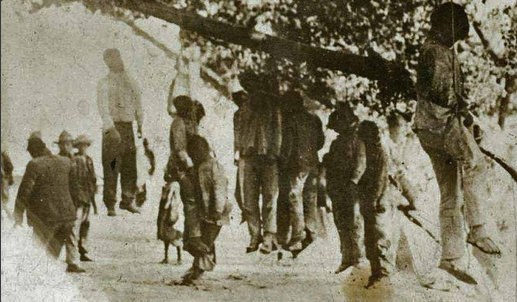








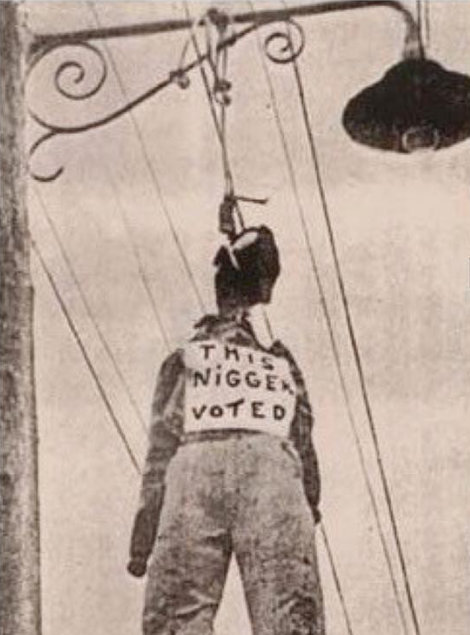








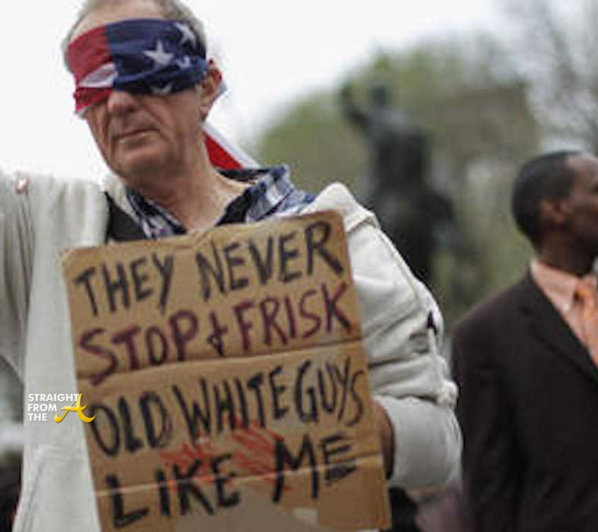 a-broke-white-person/
a-broke-white-person/
You must be logged in to post a comment.